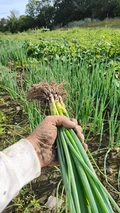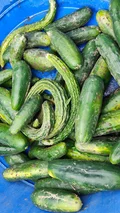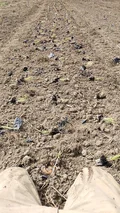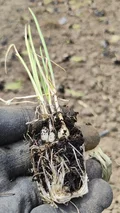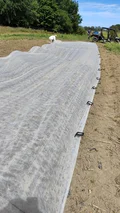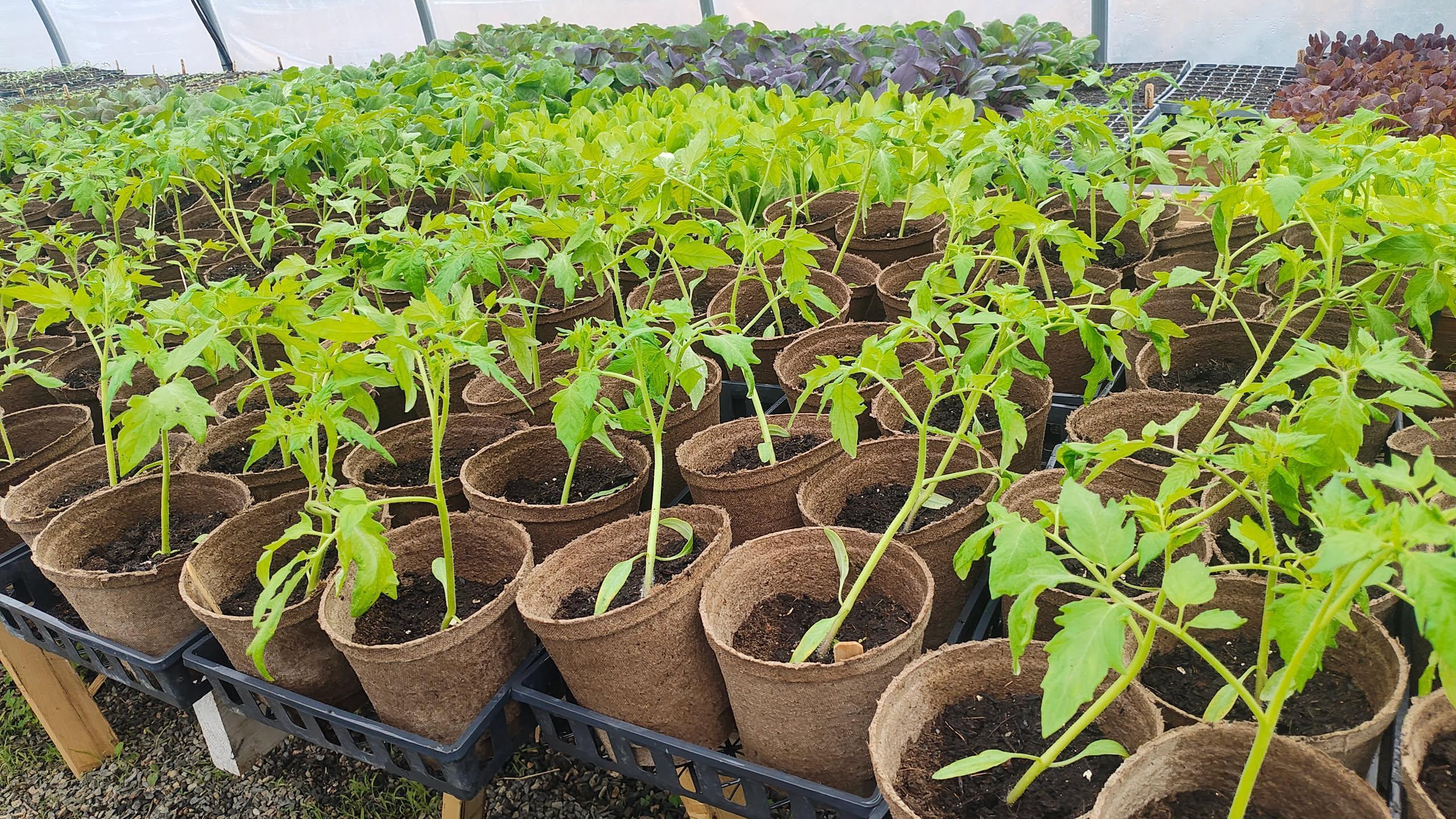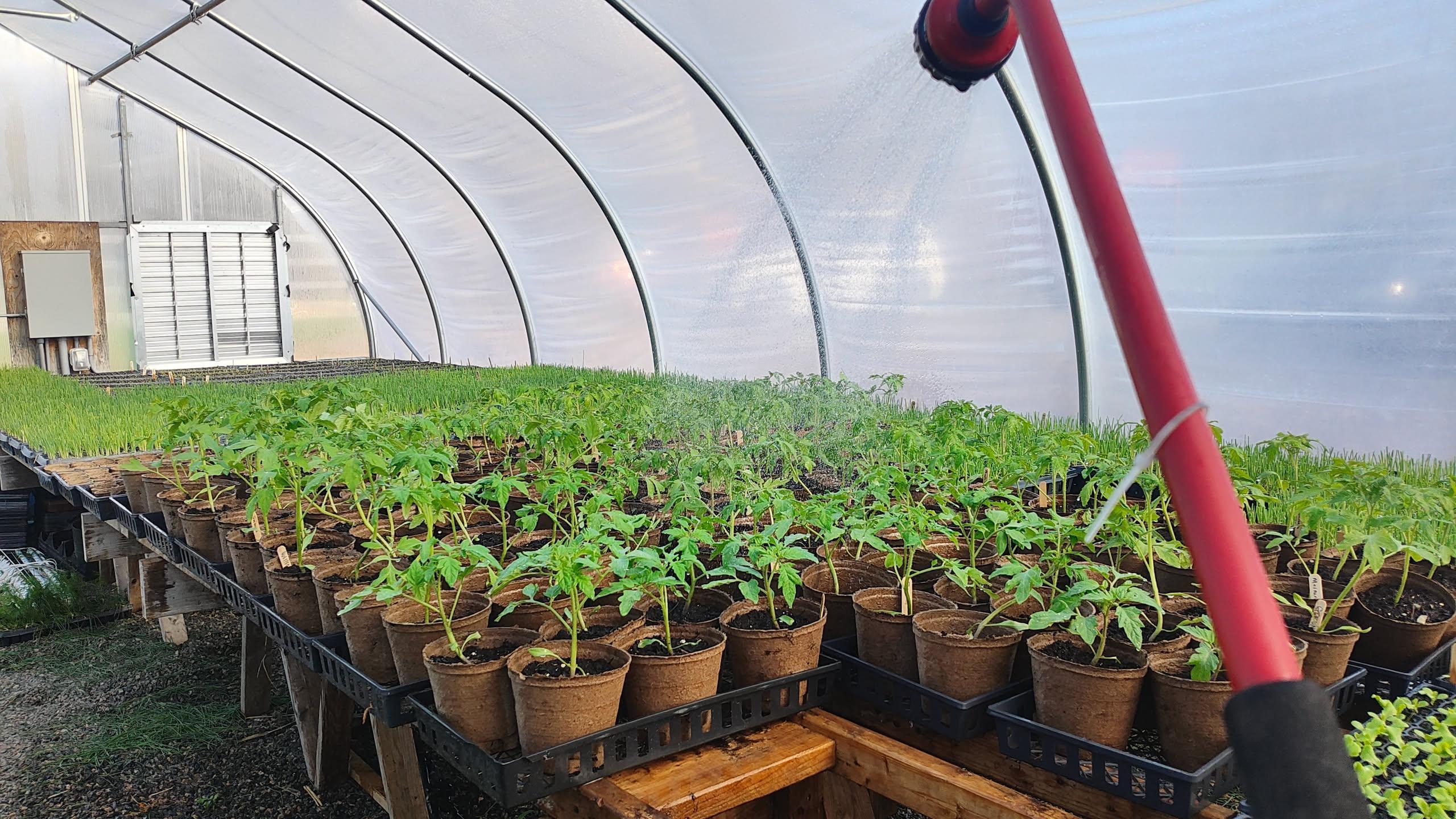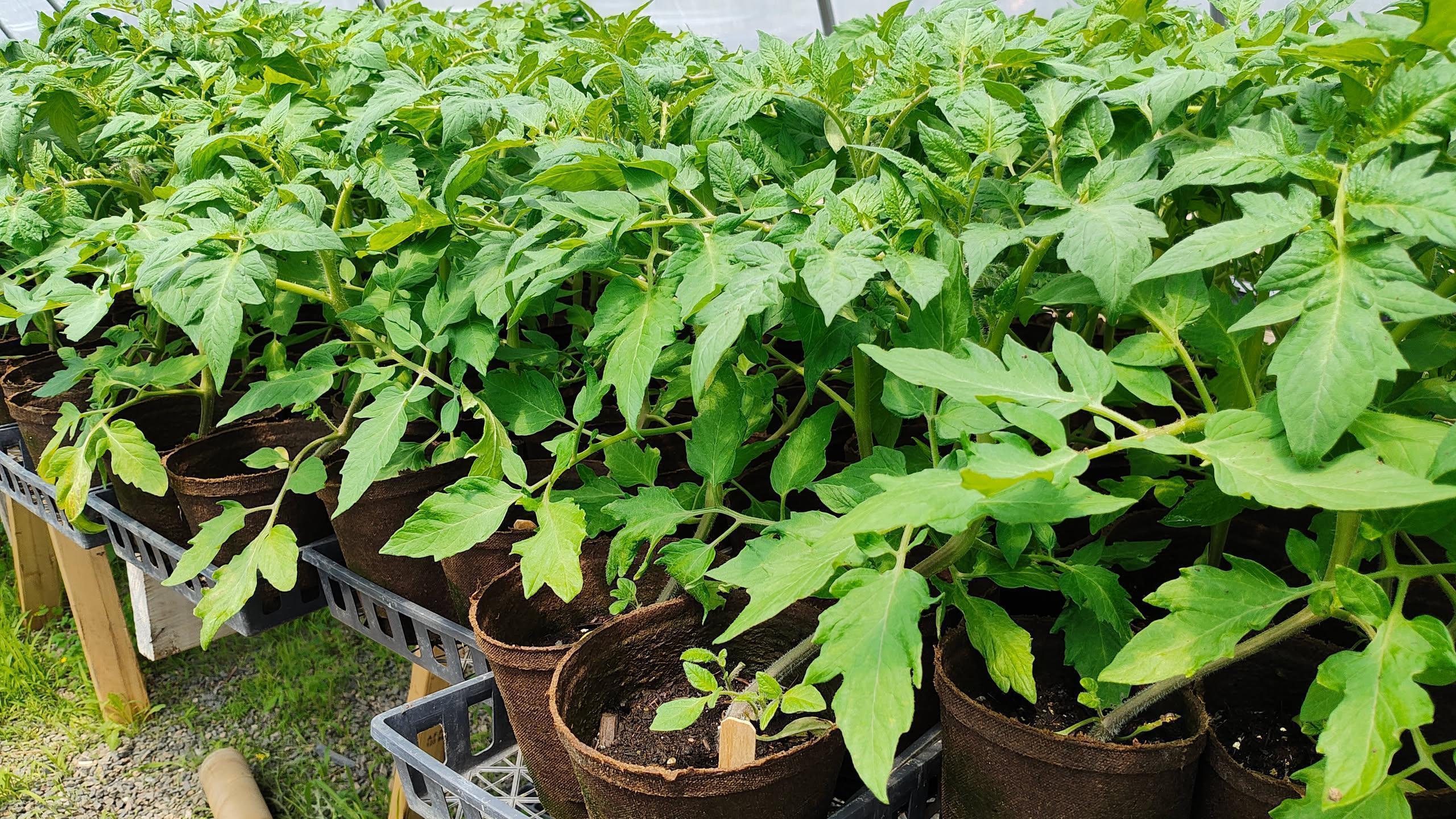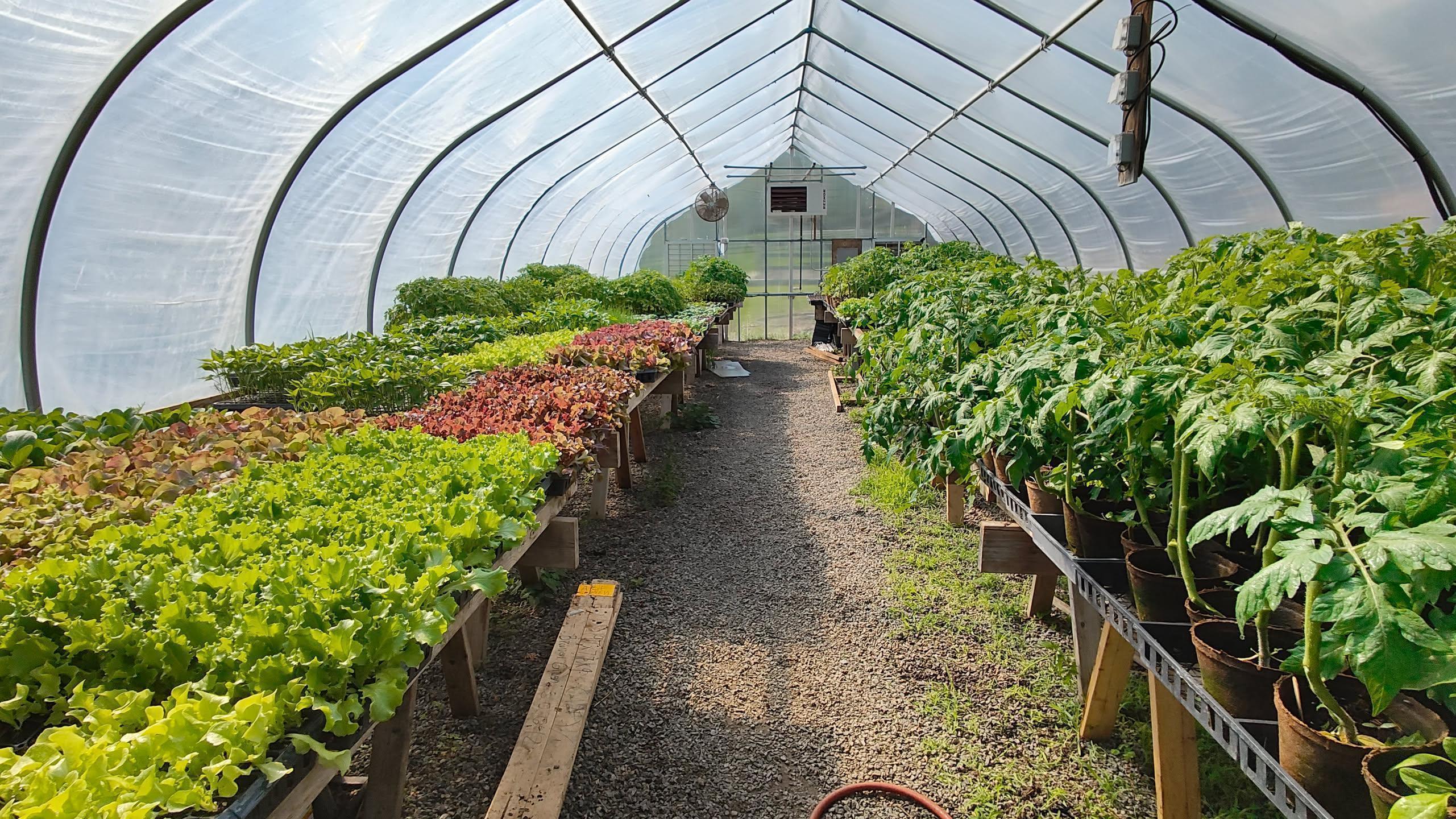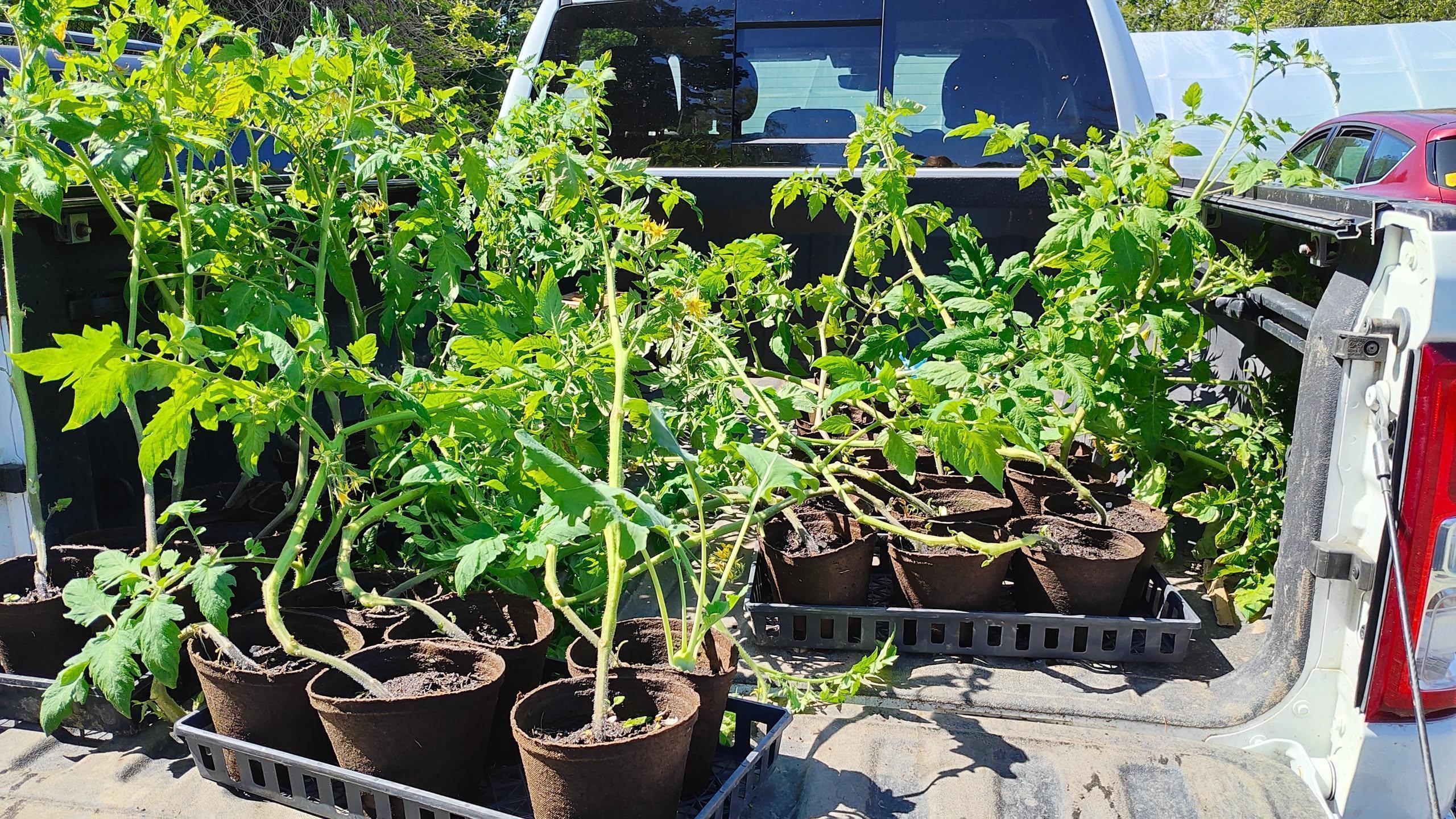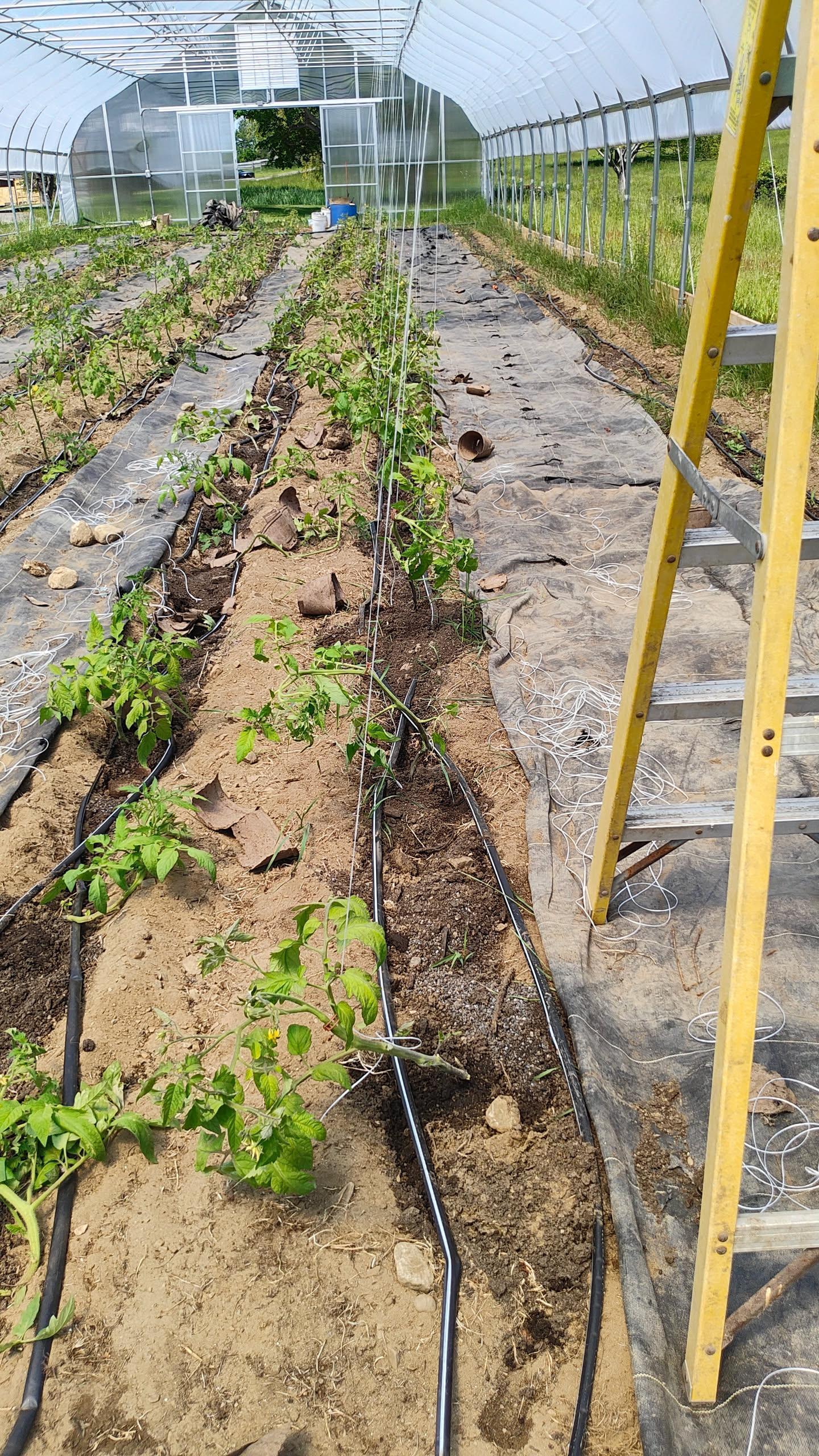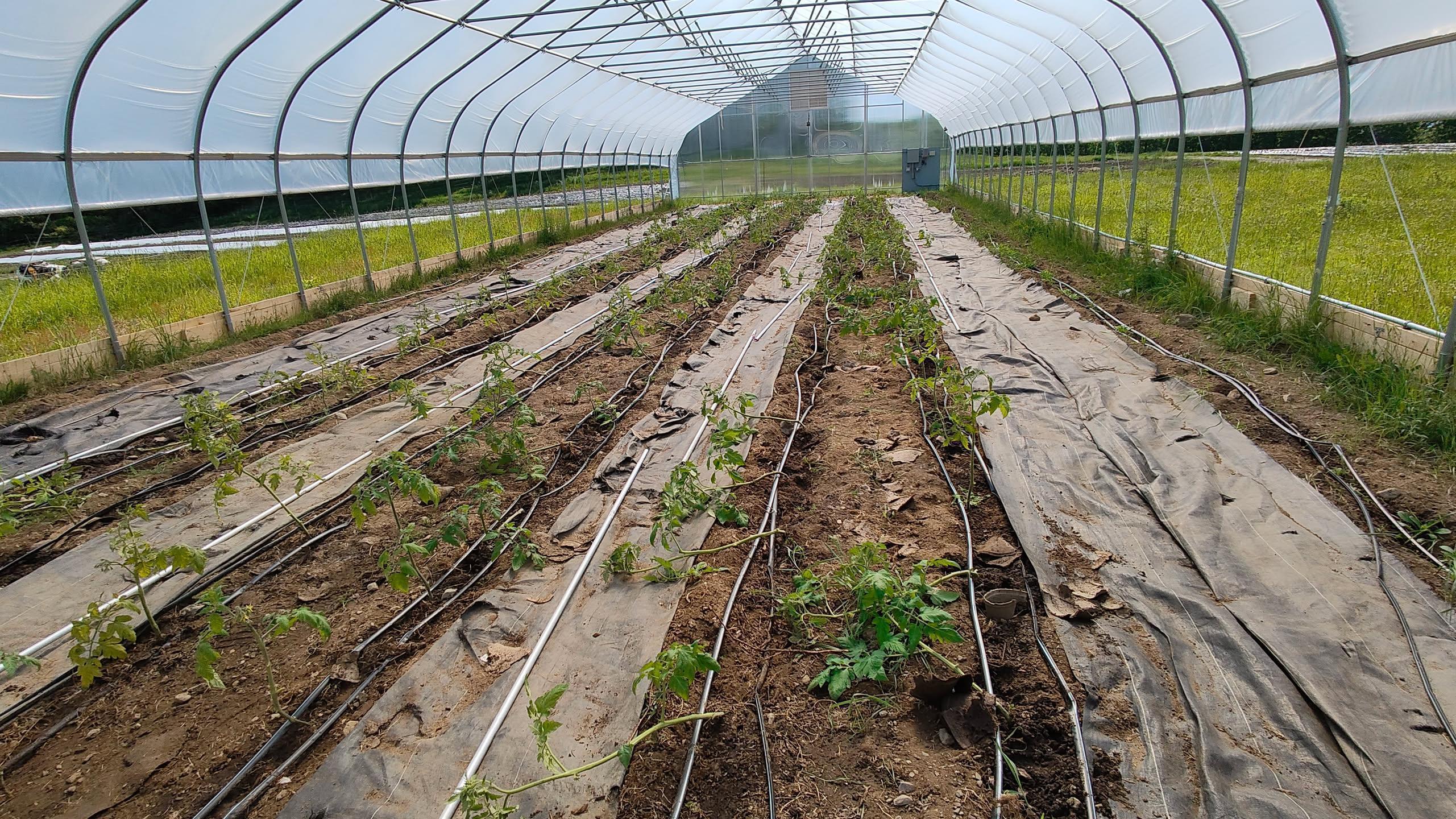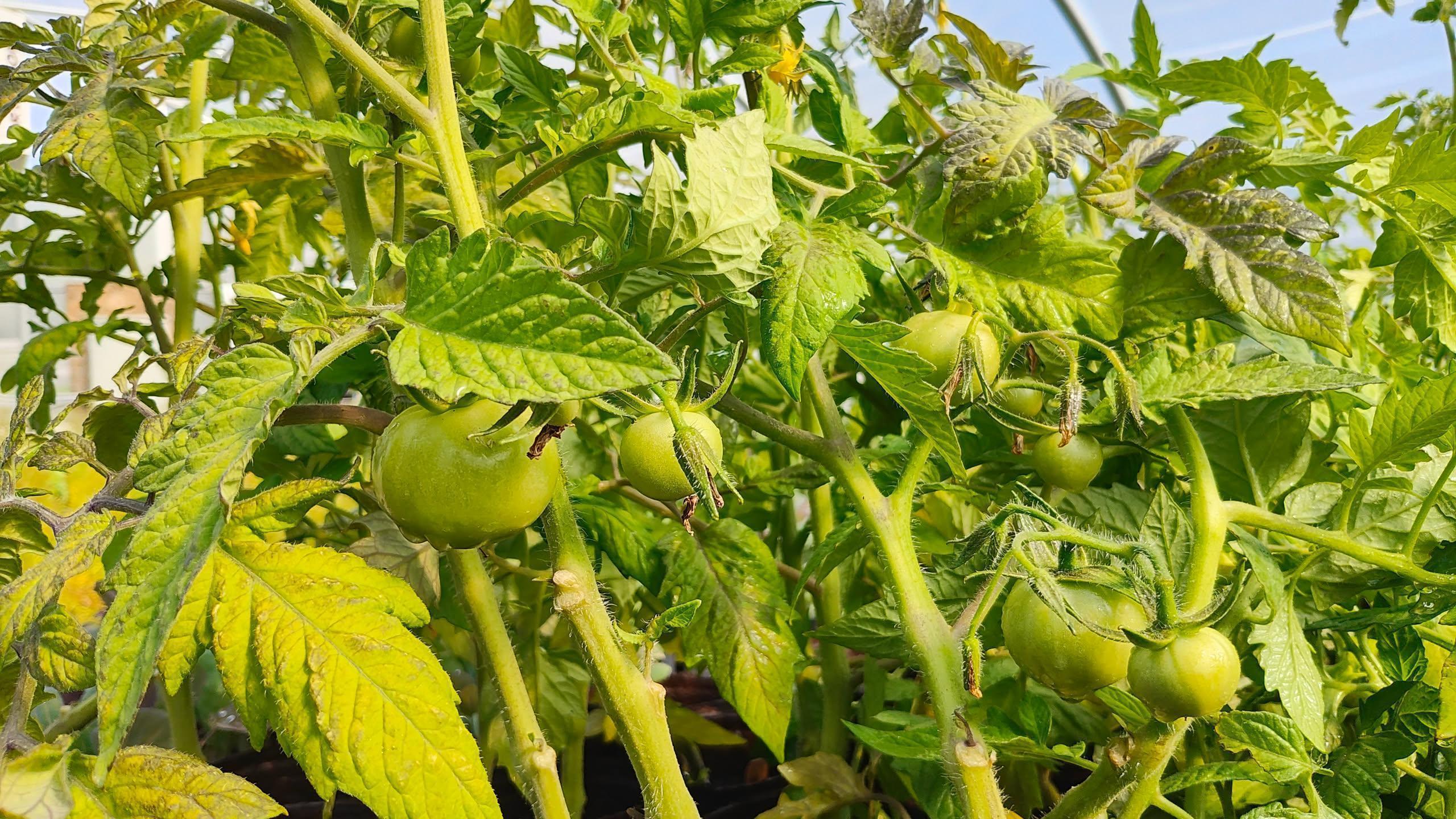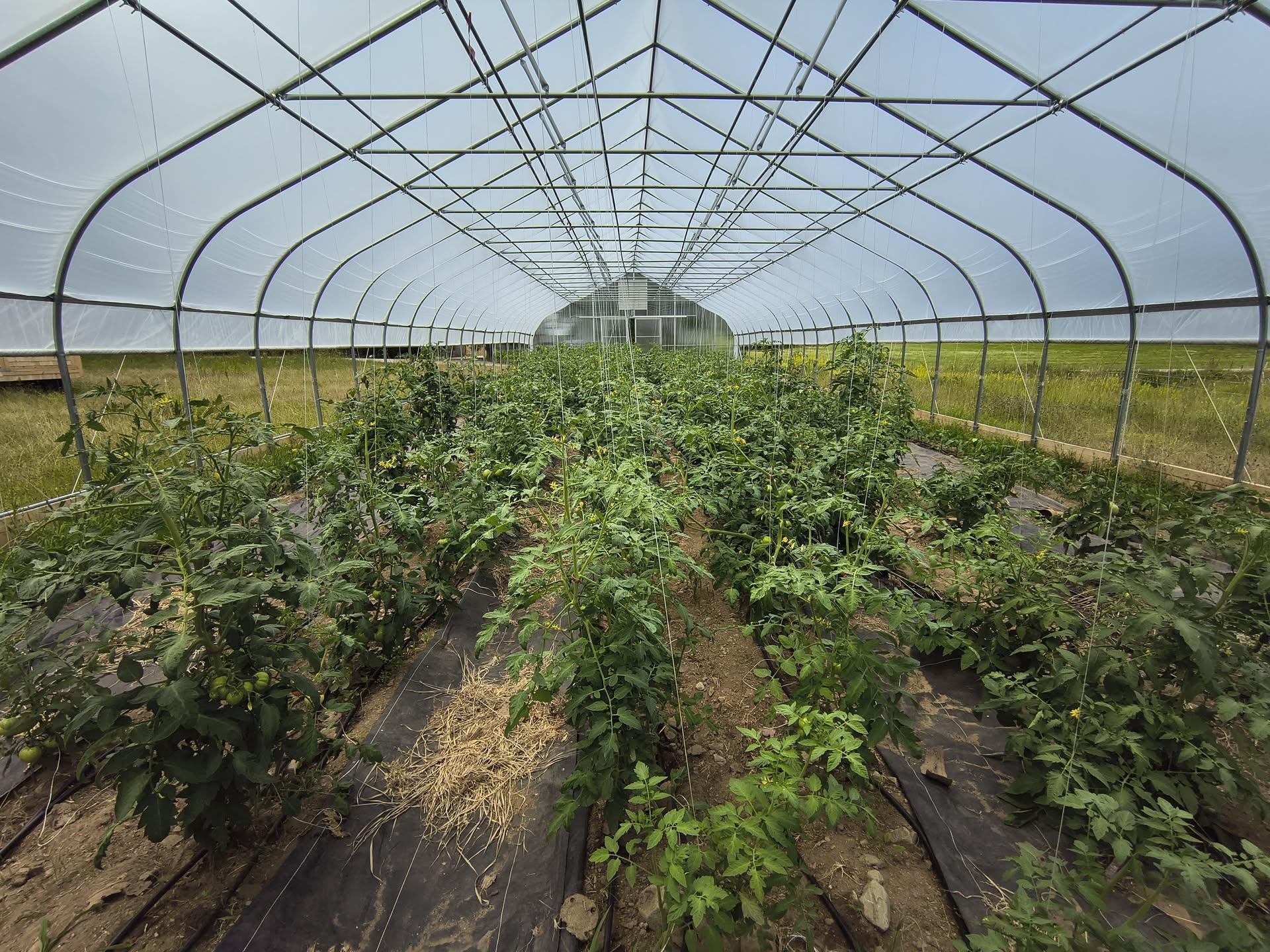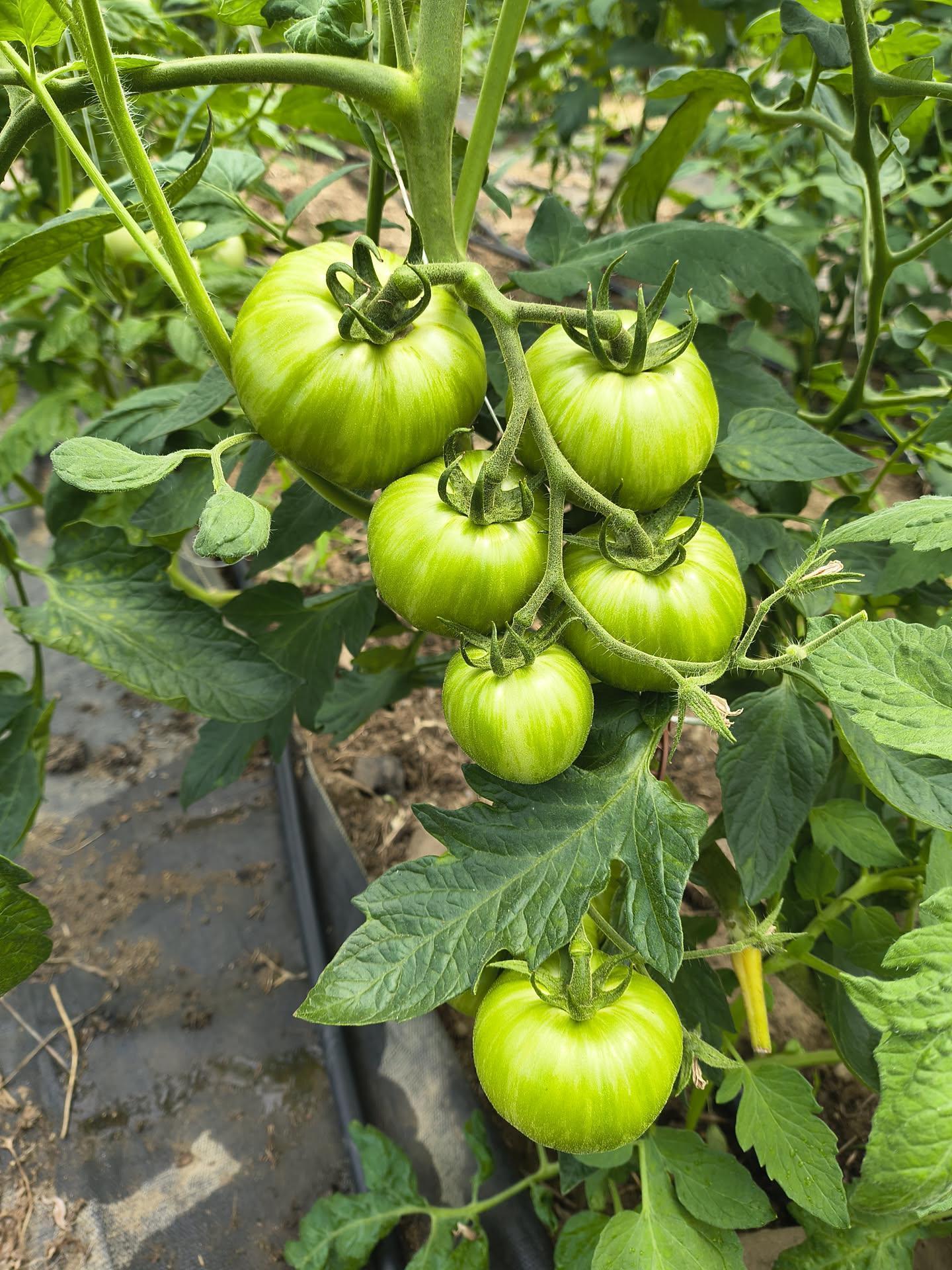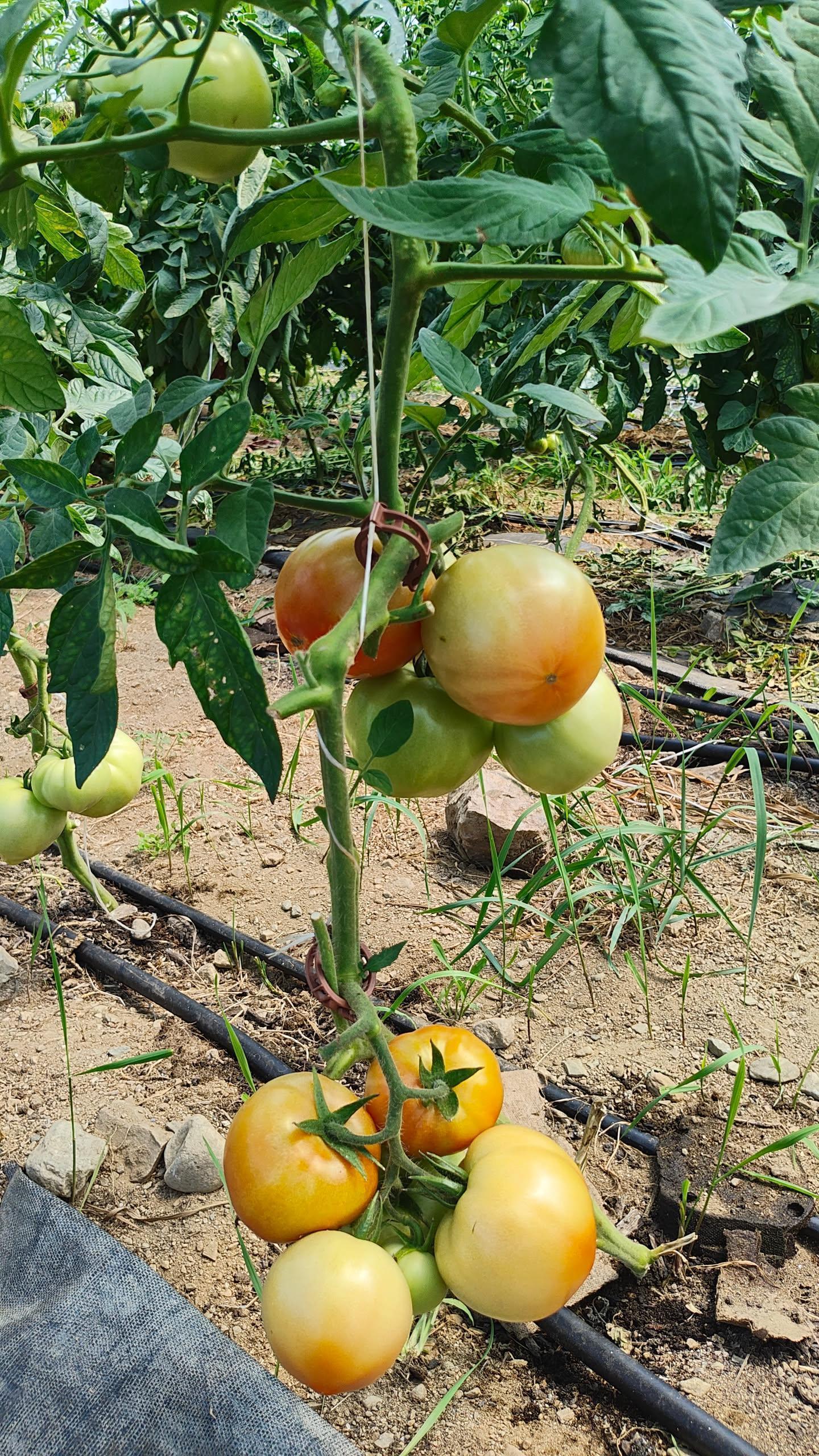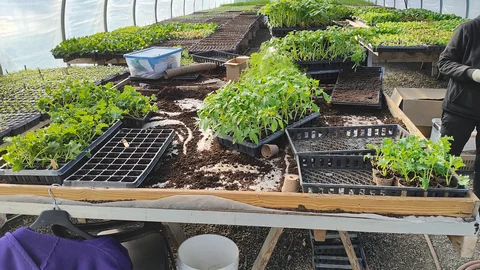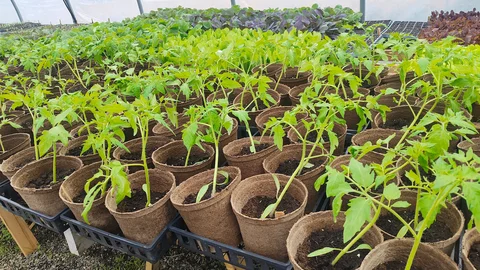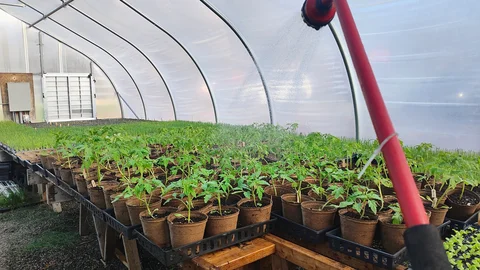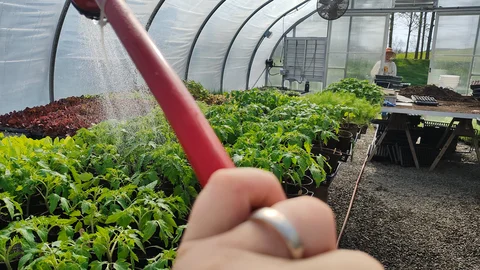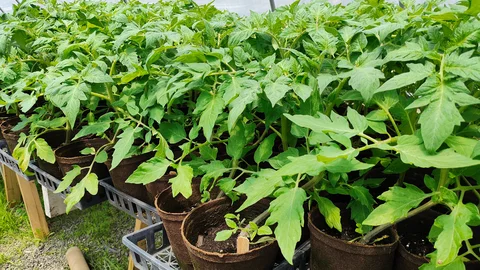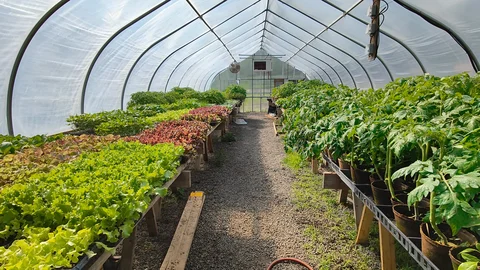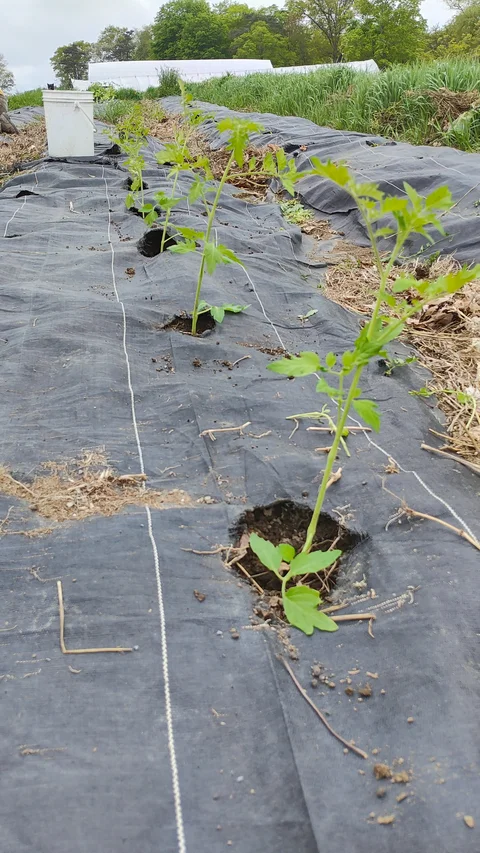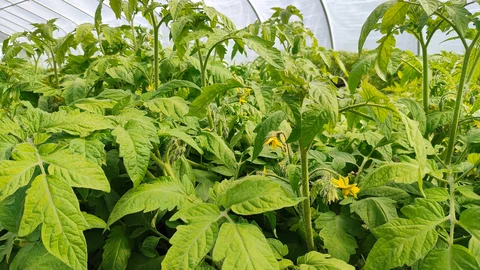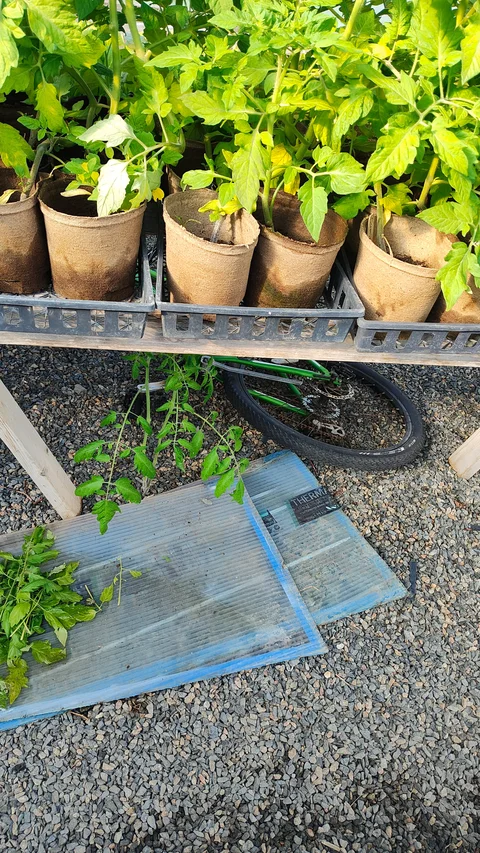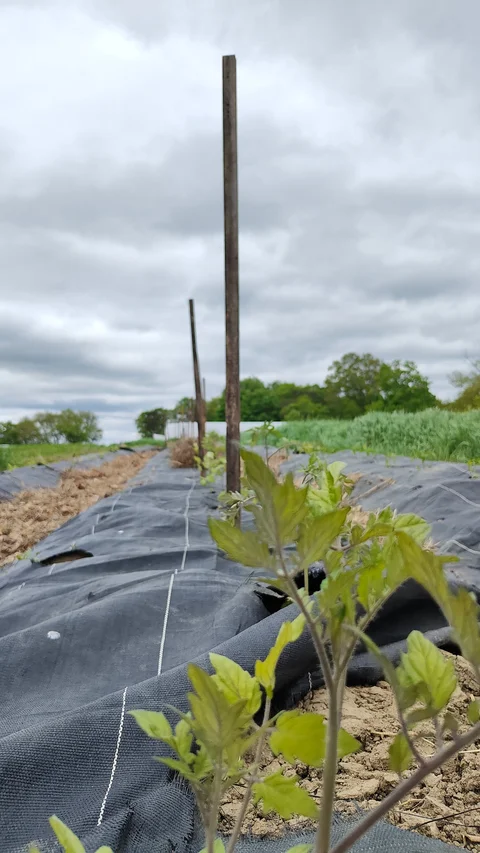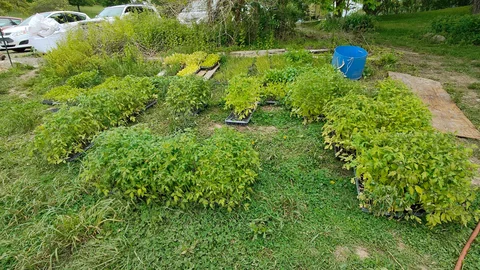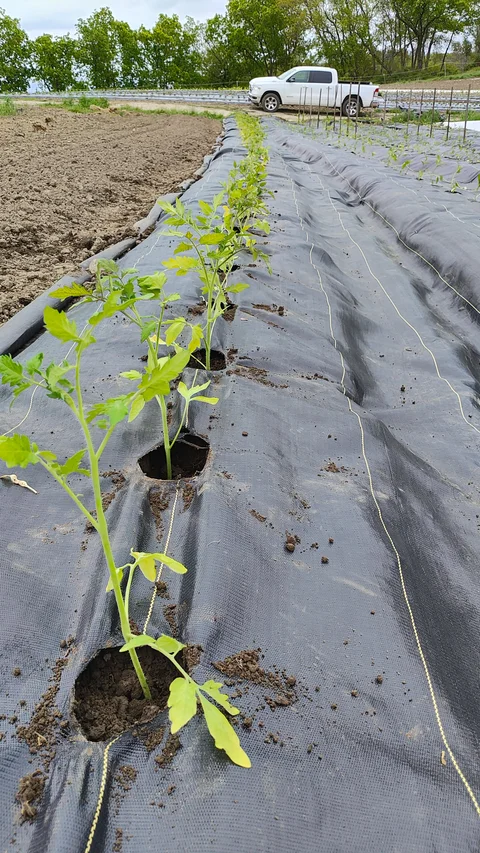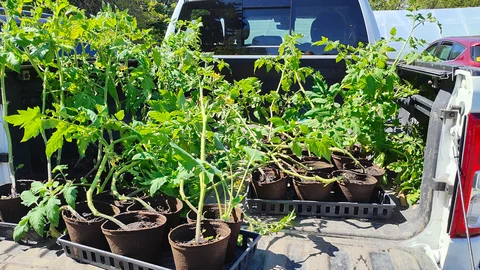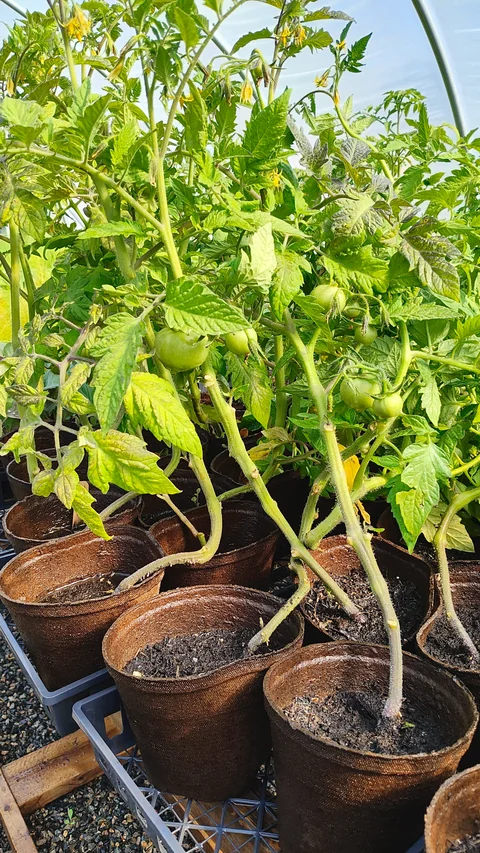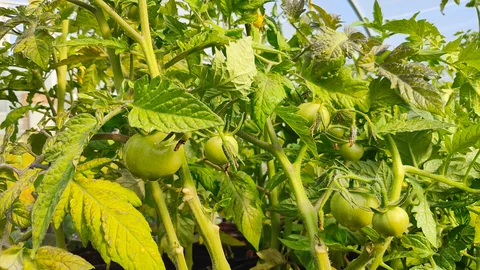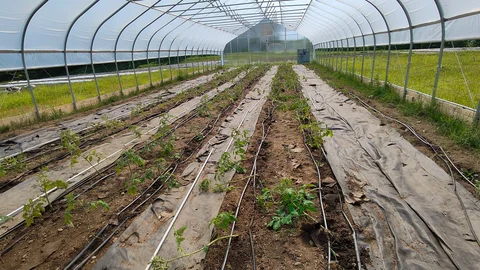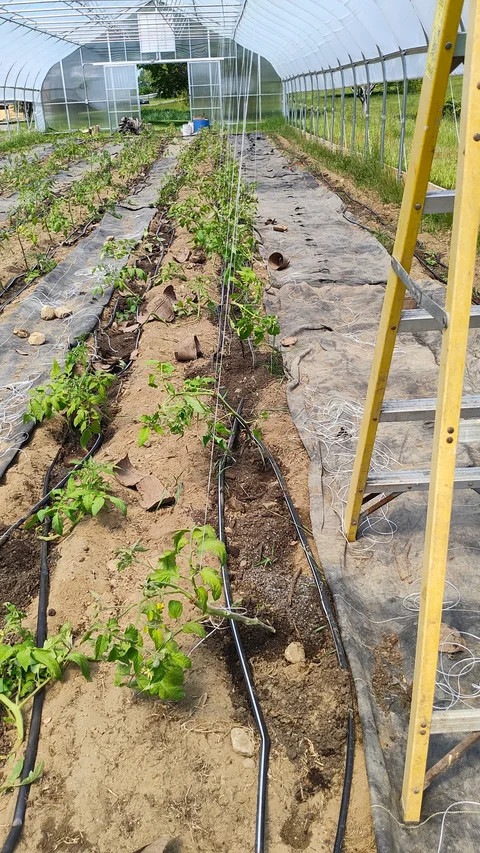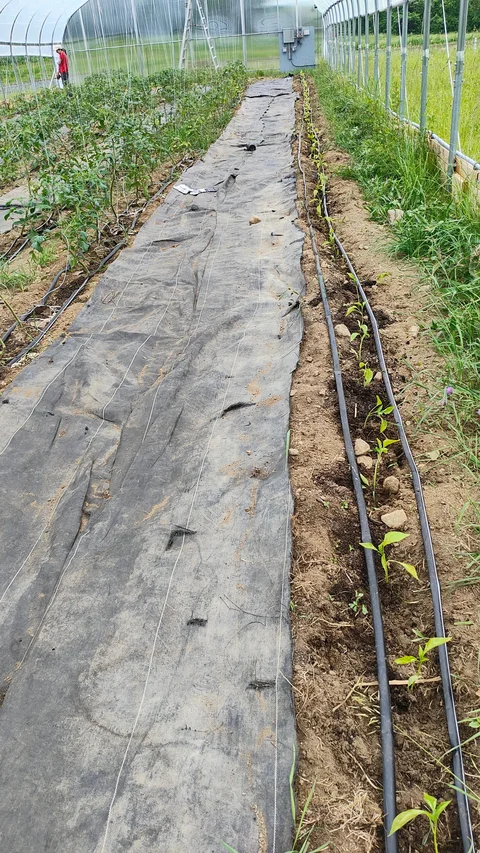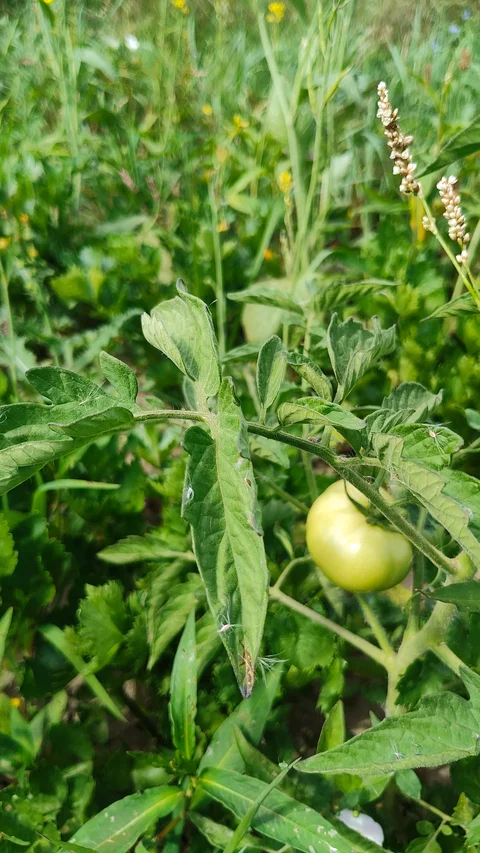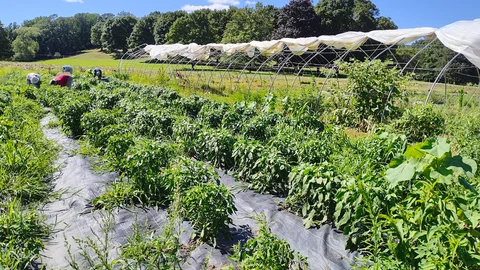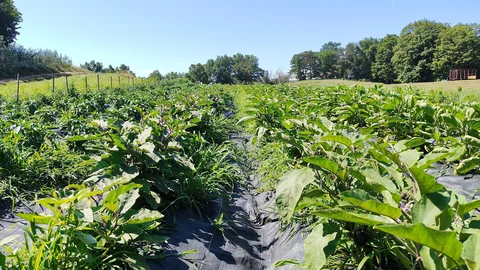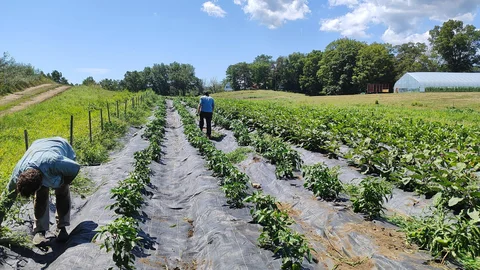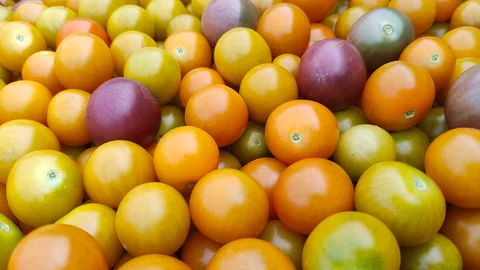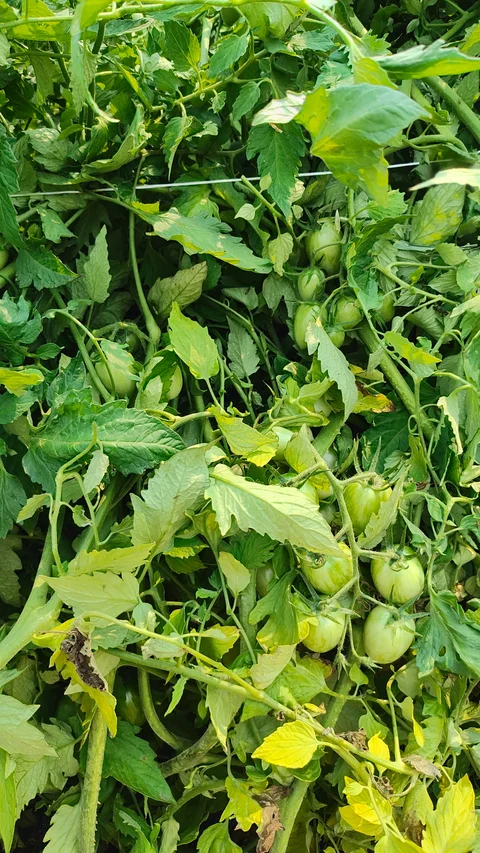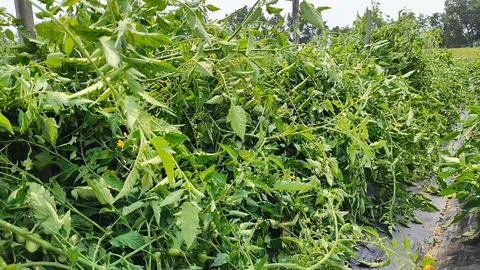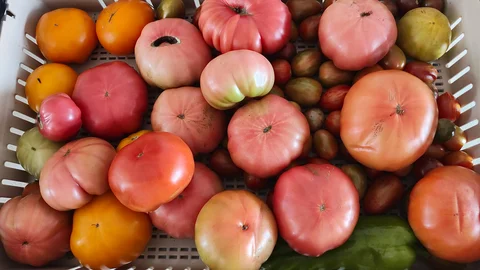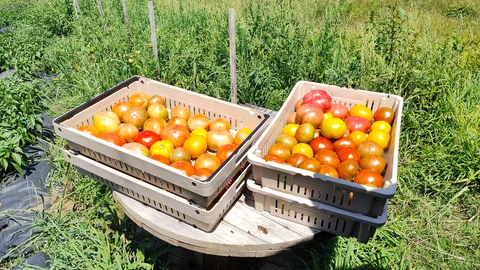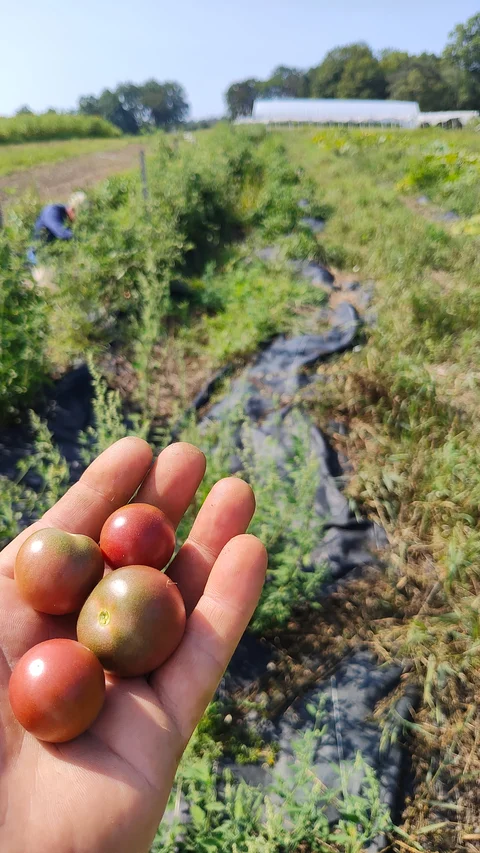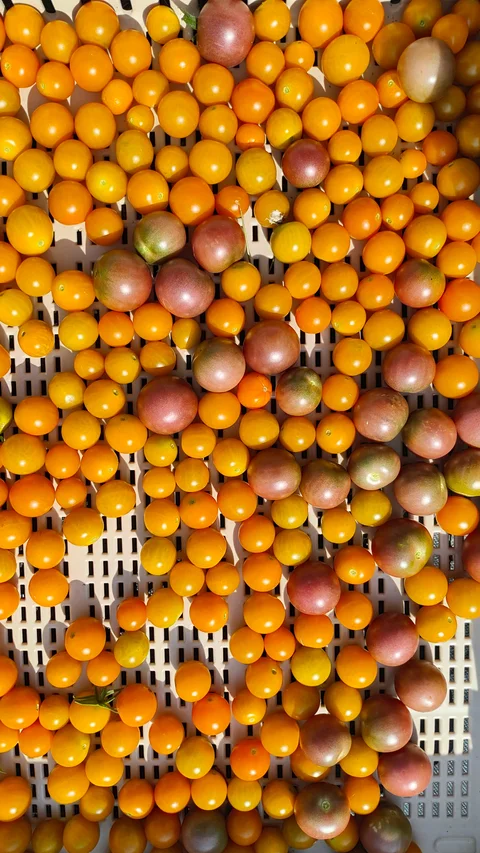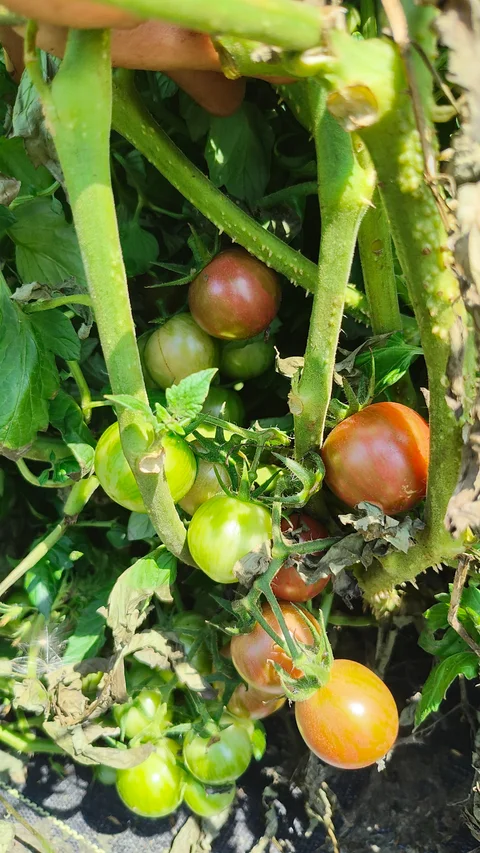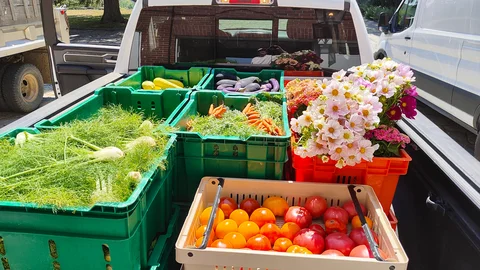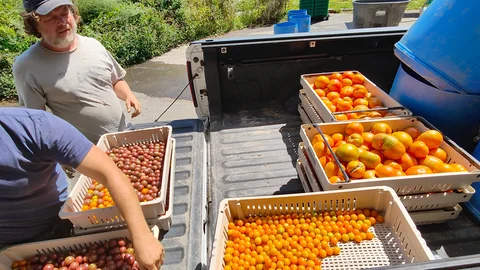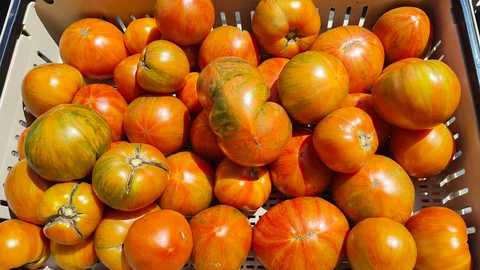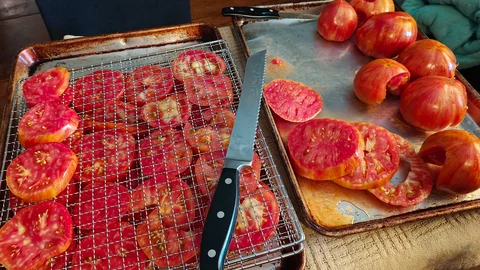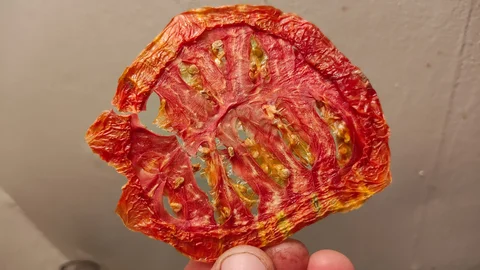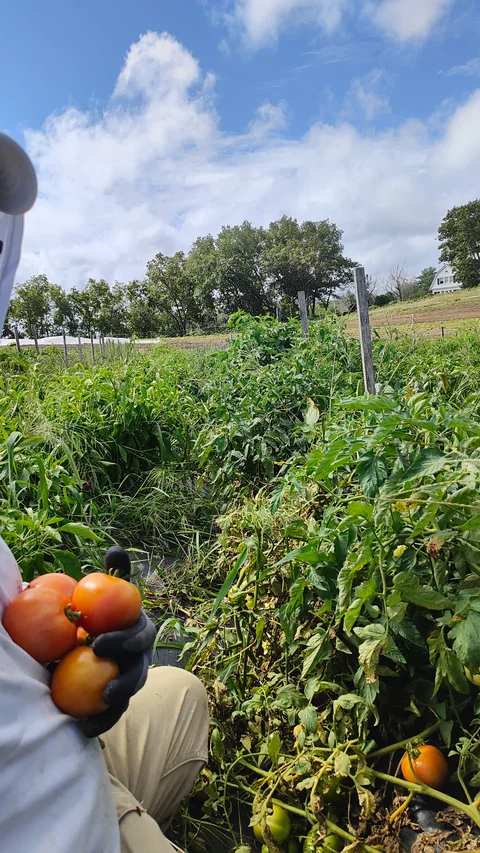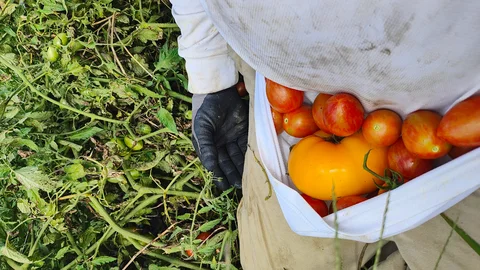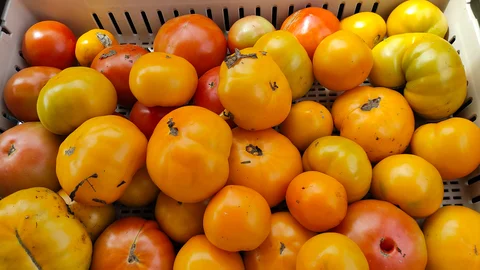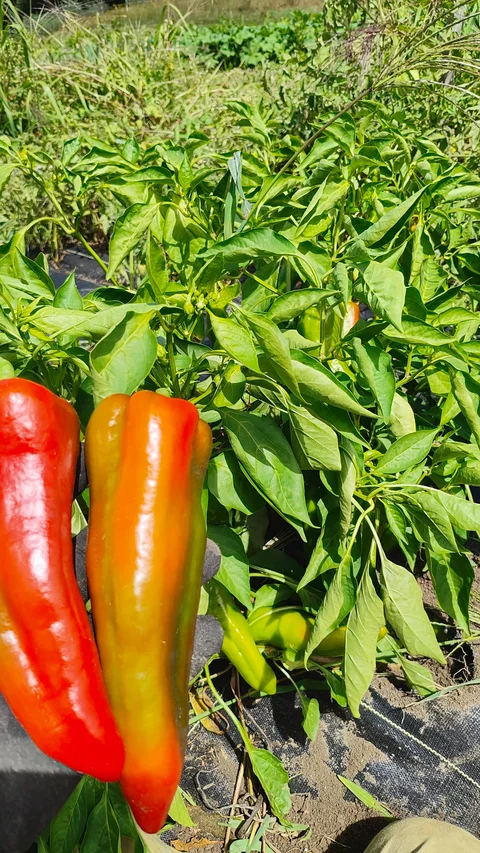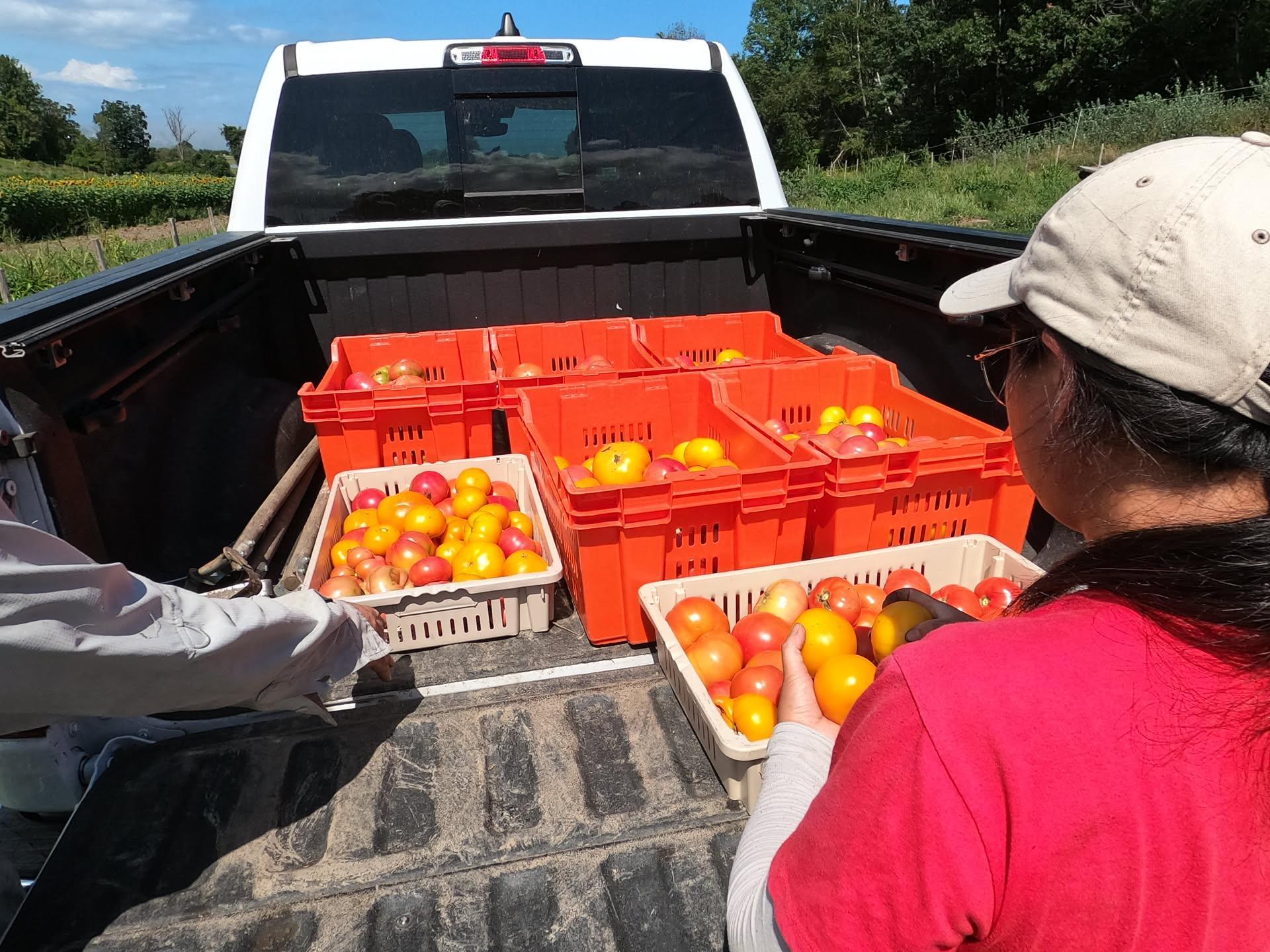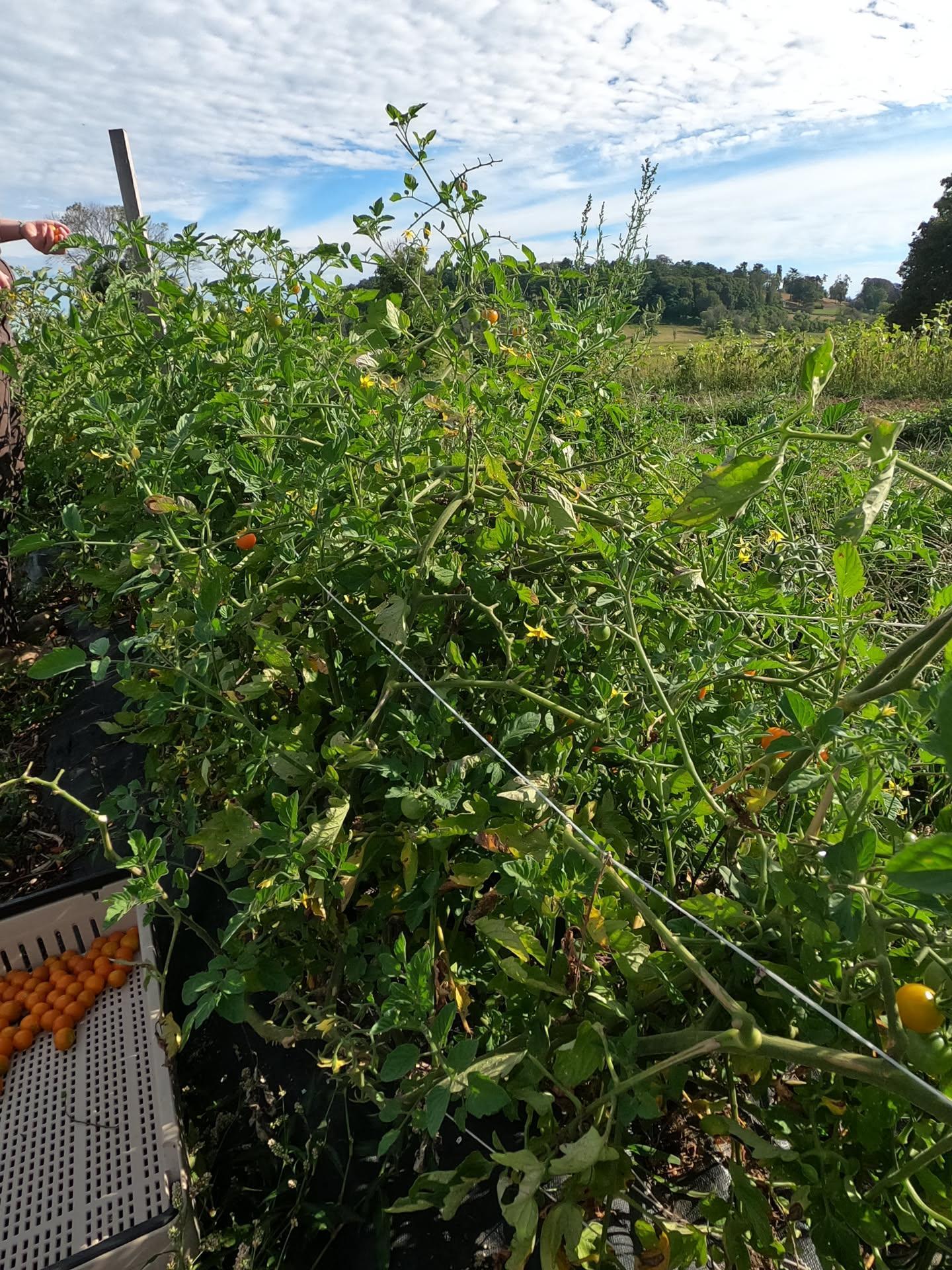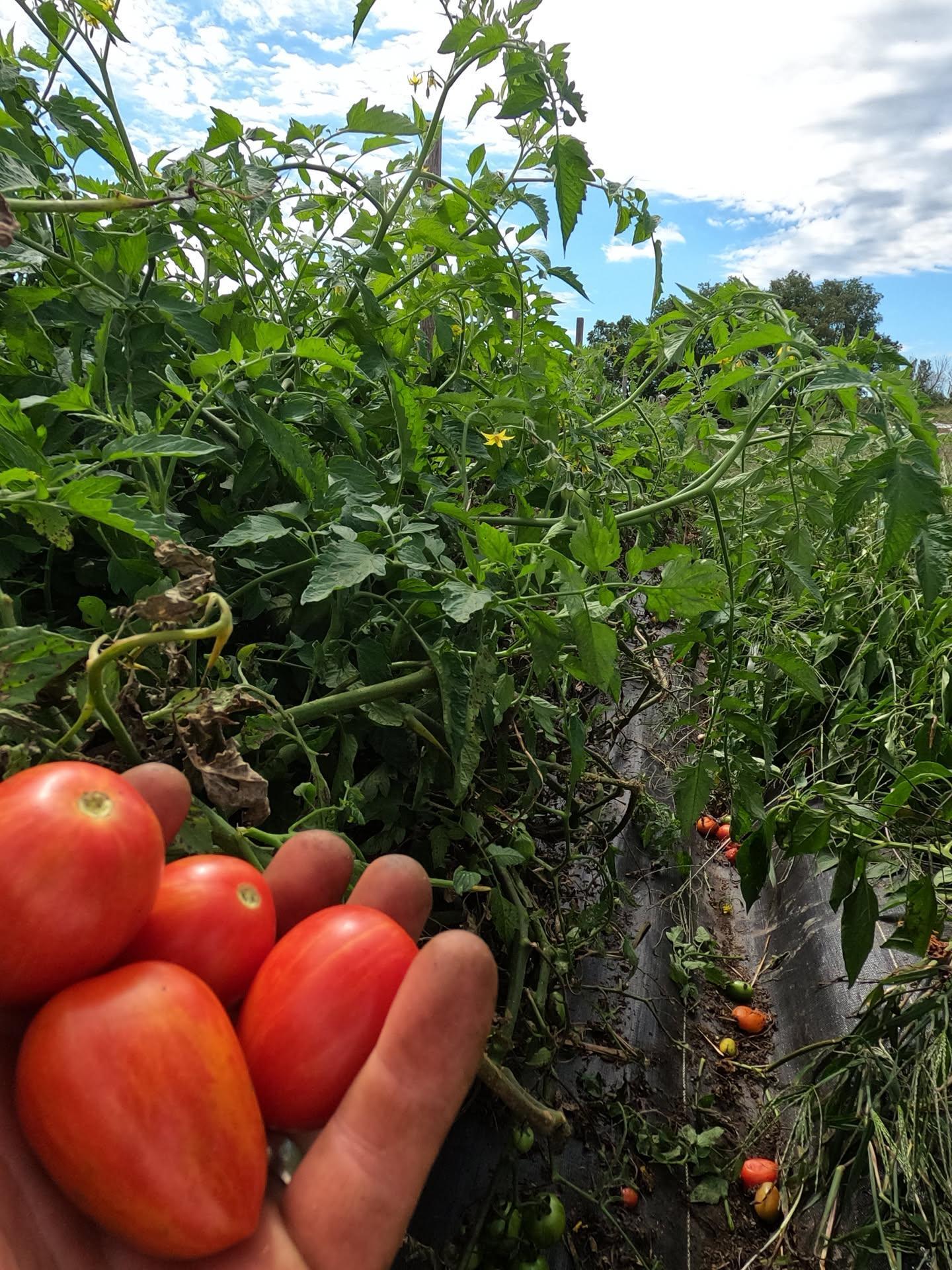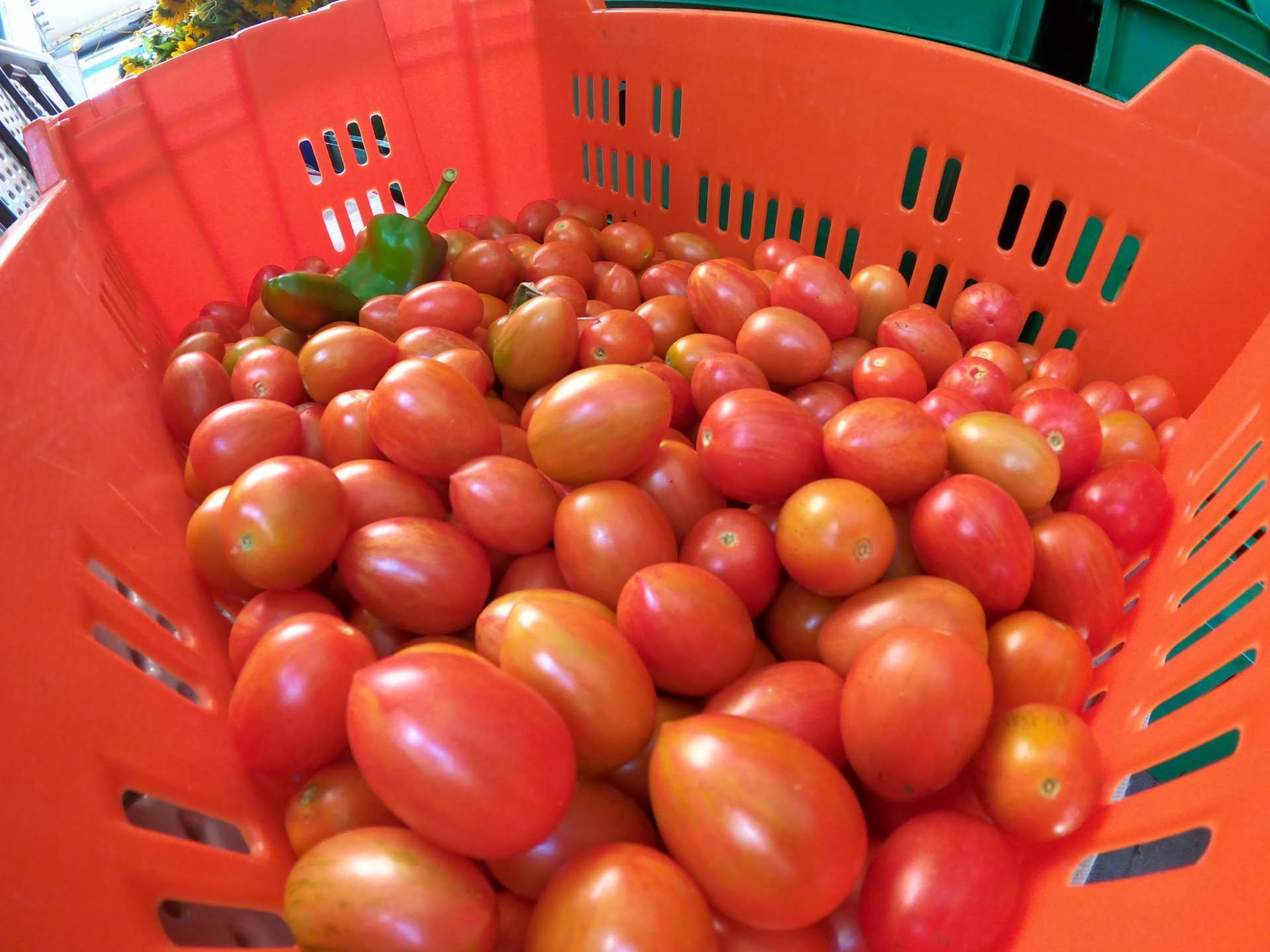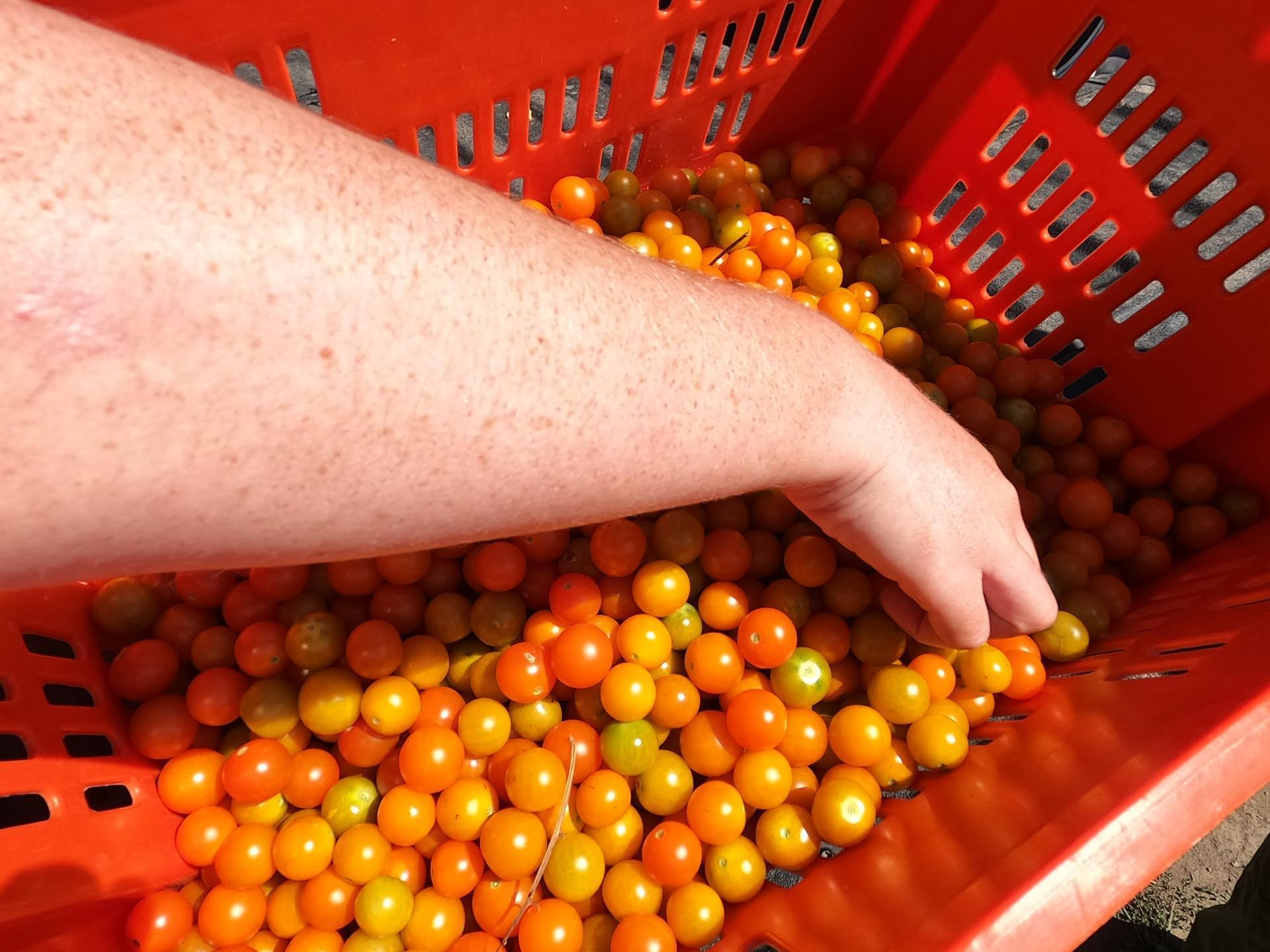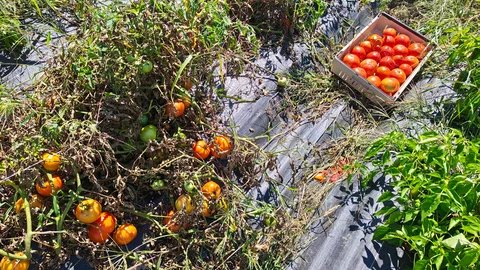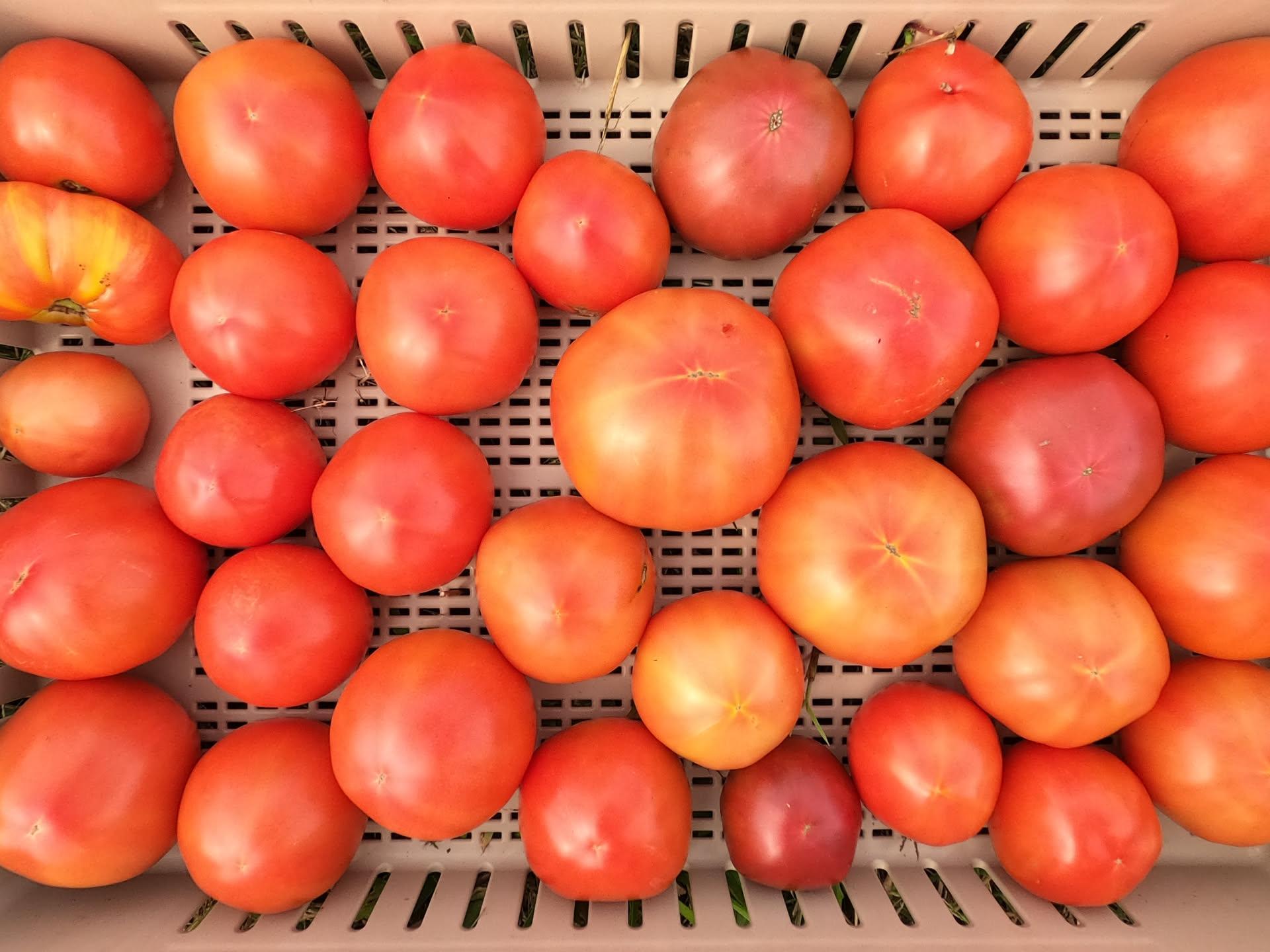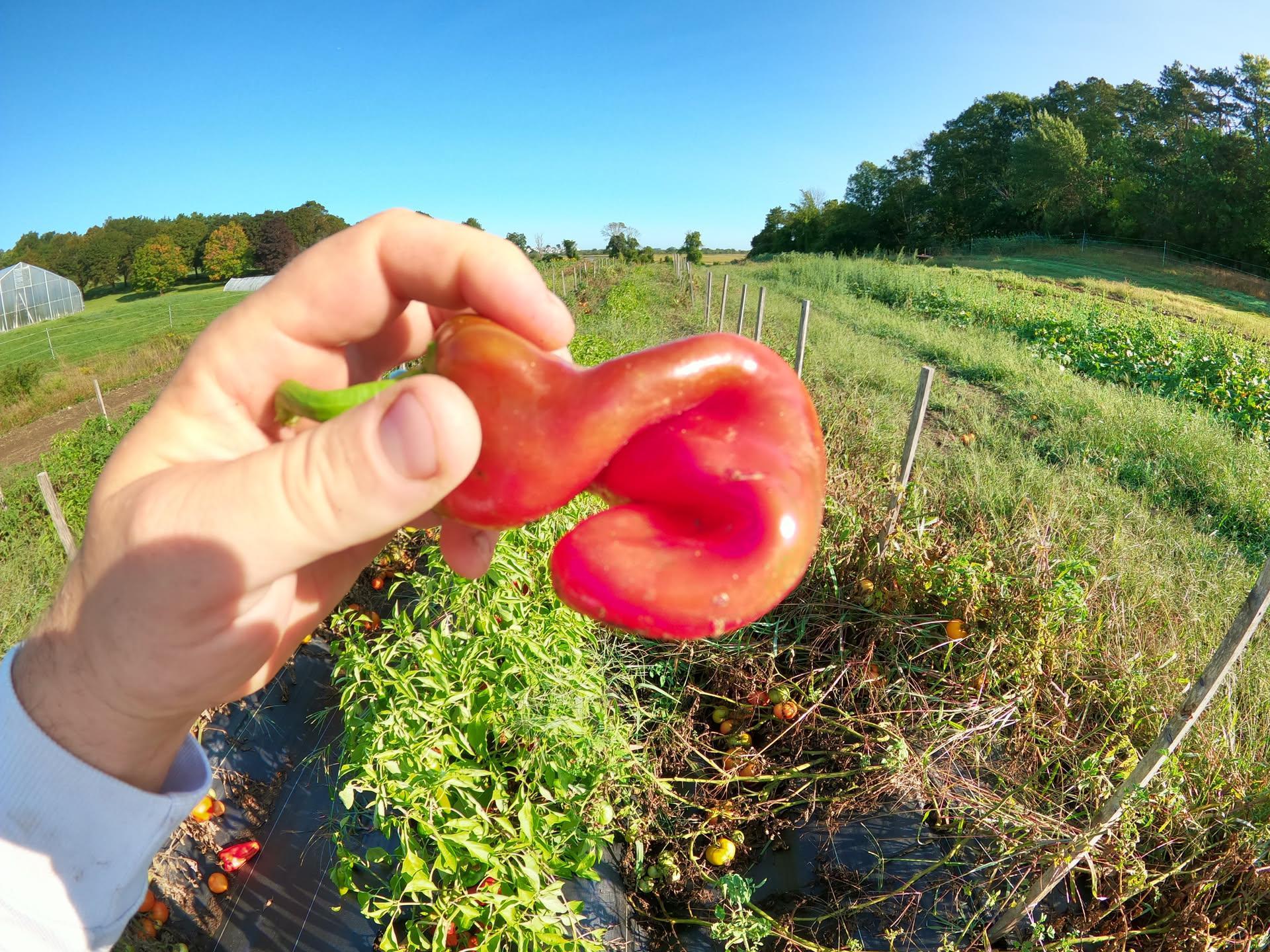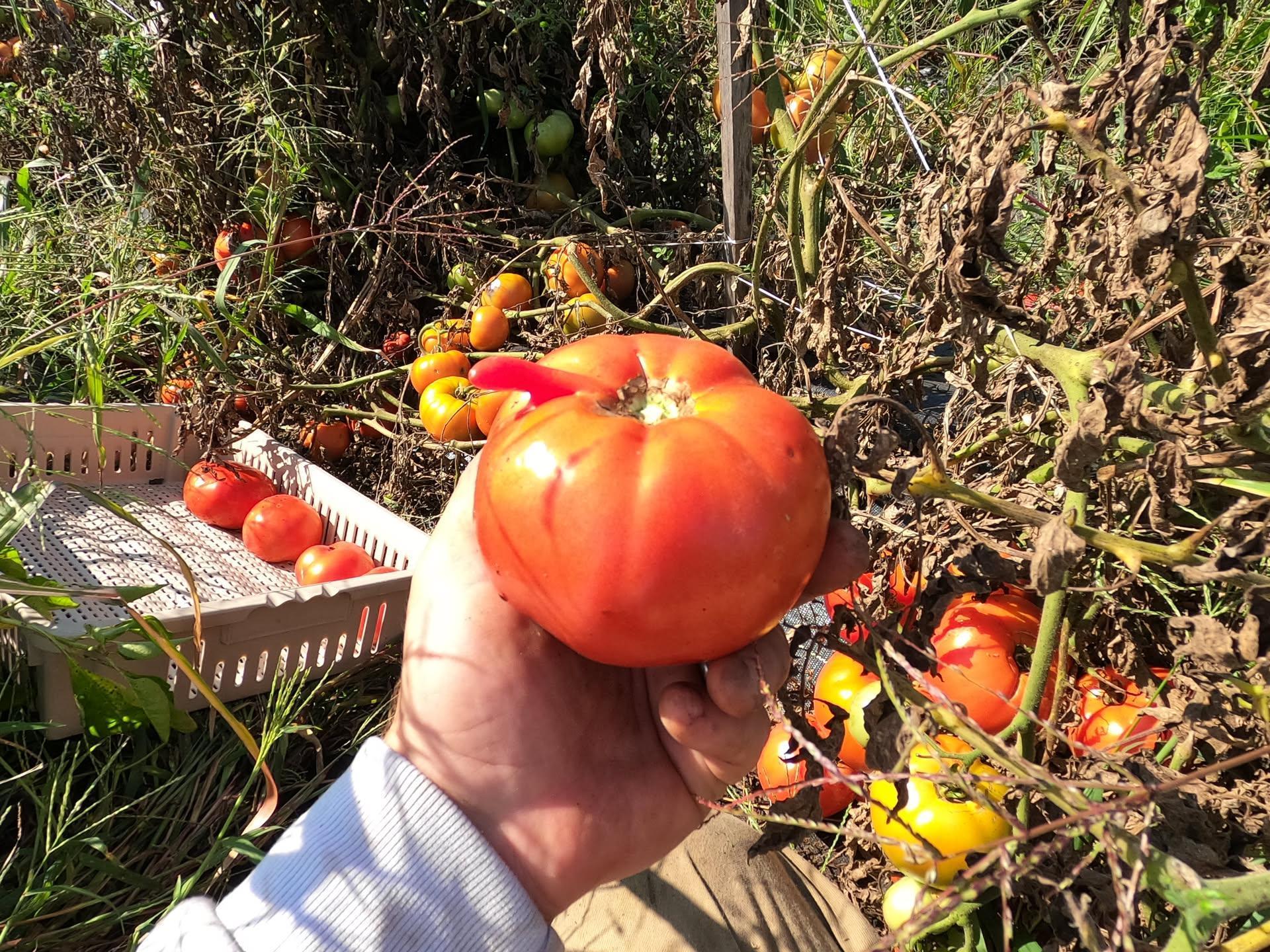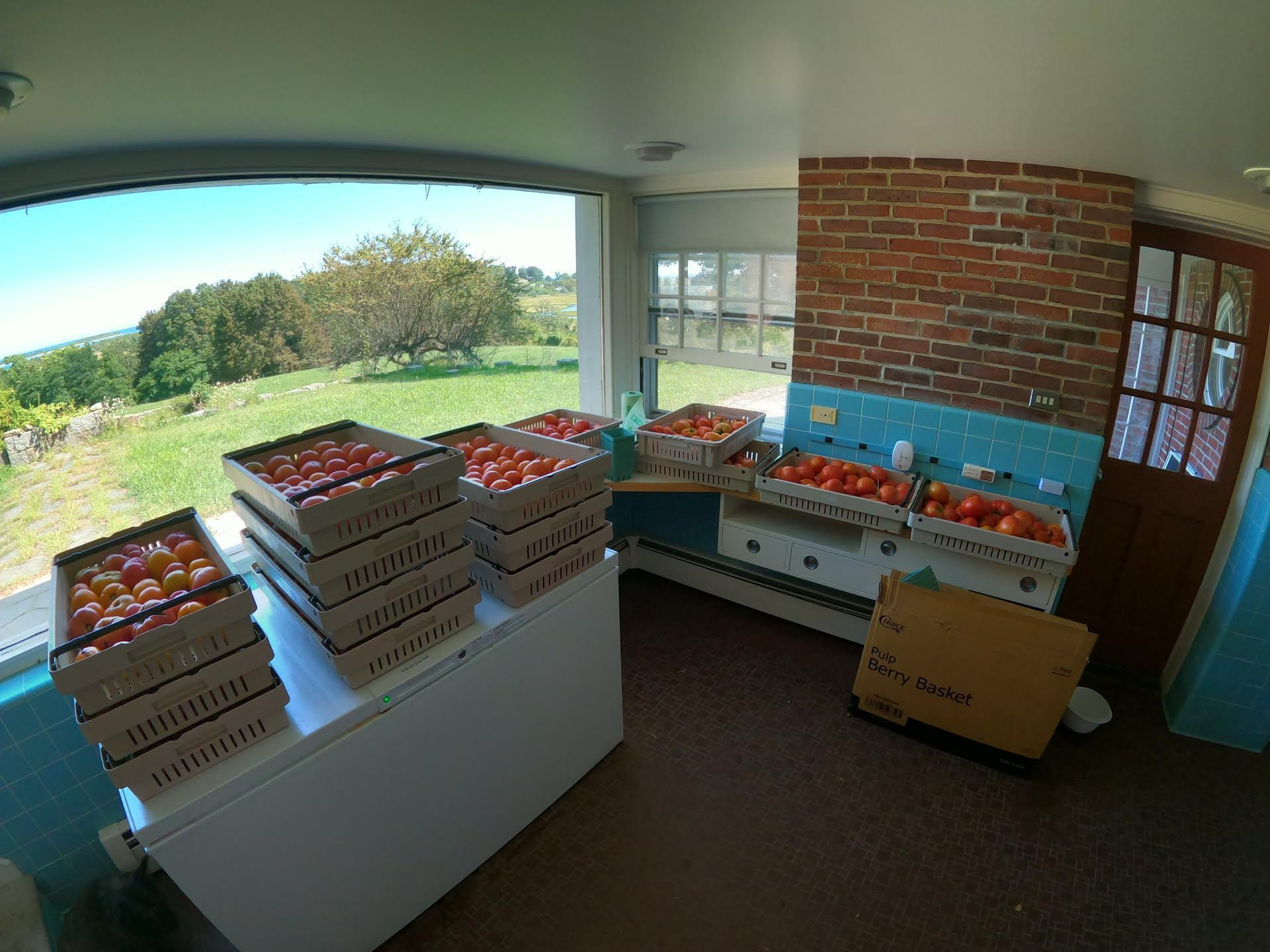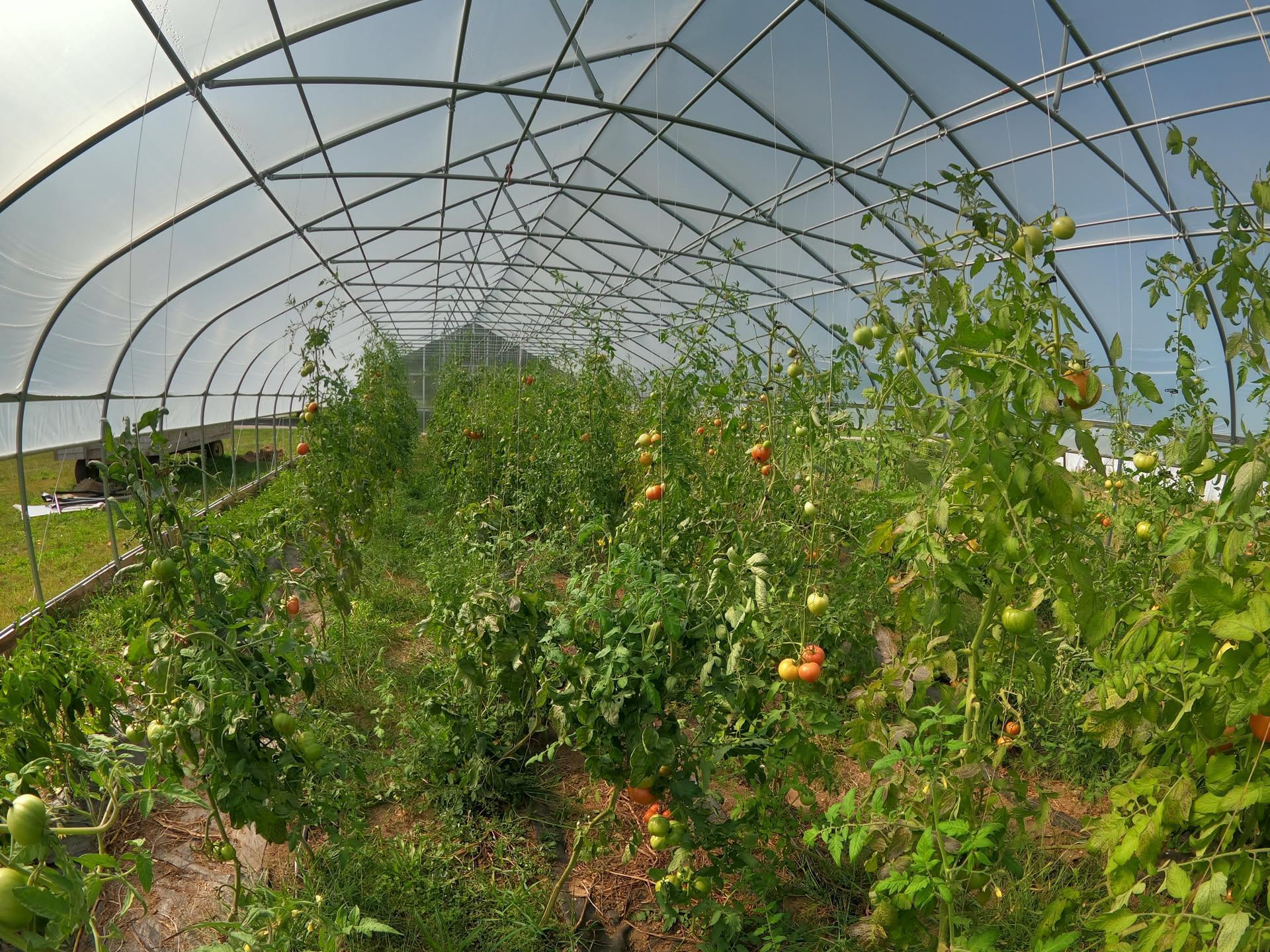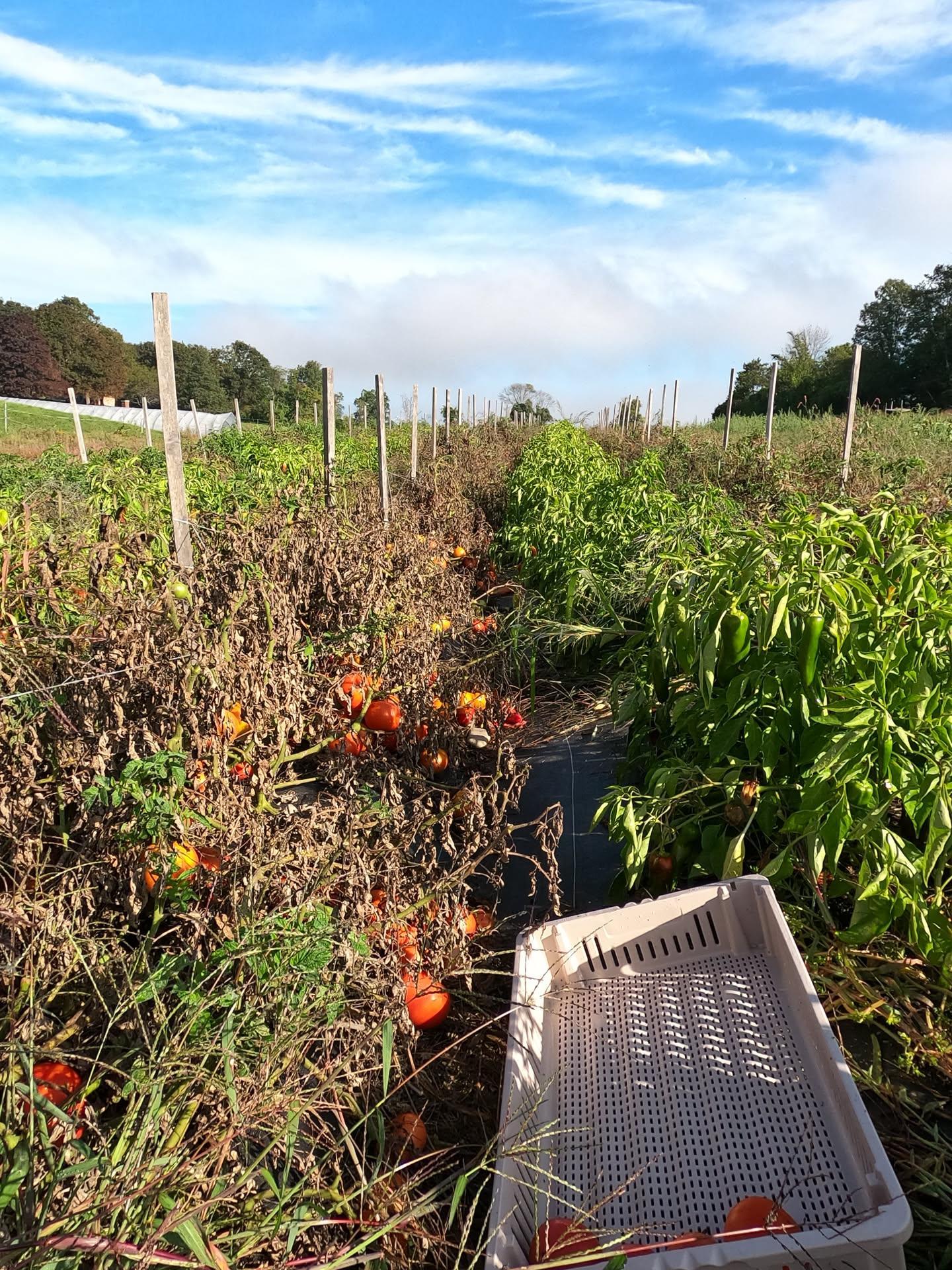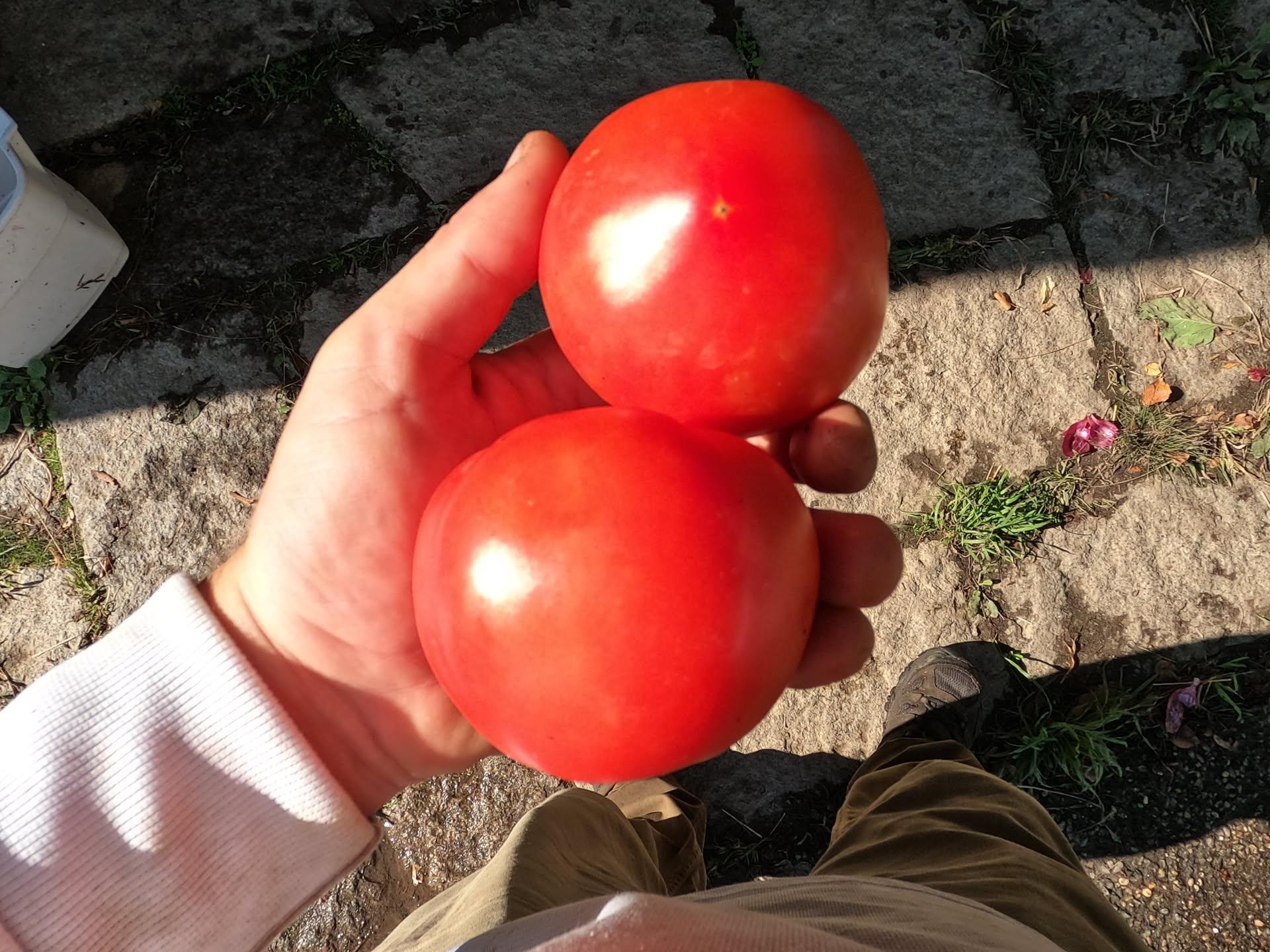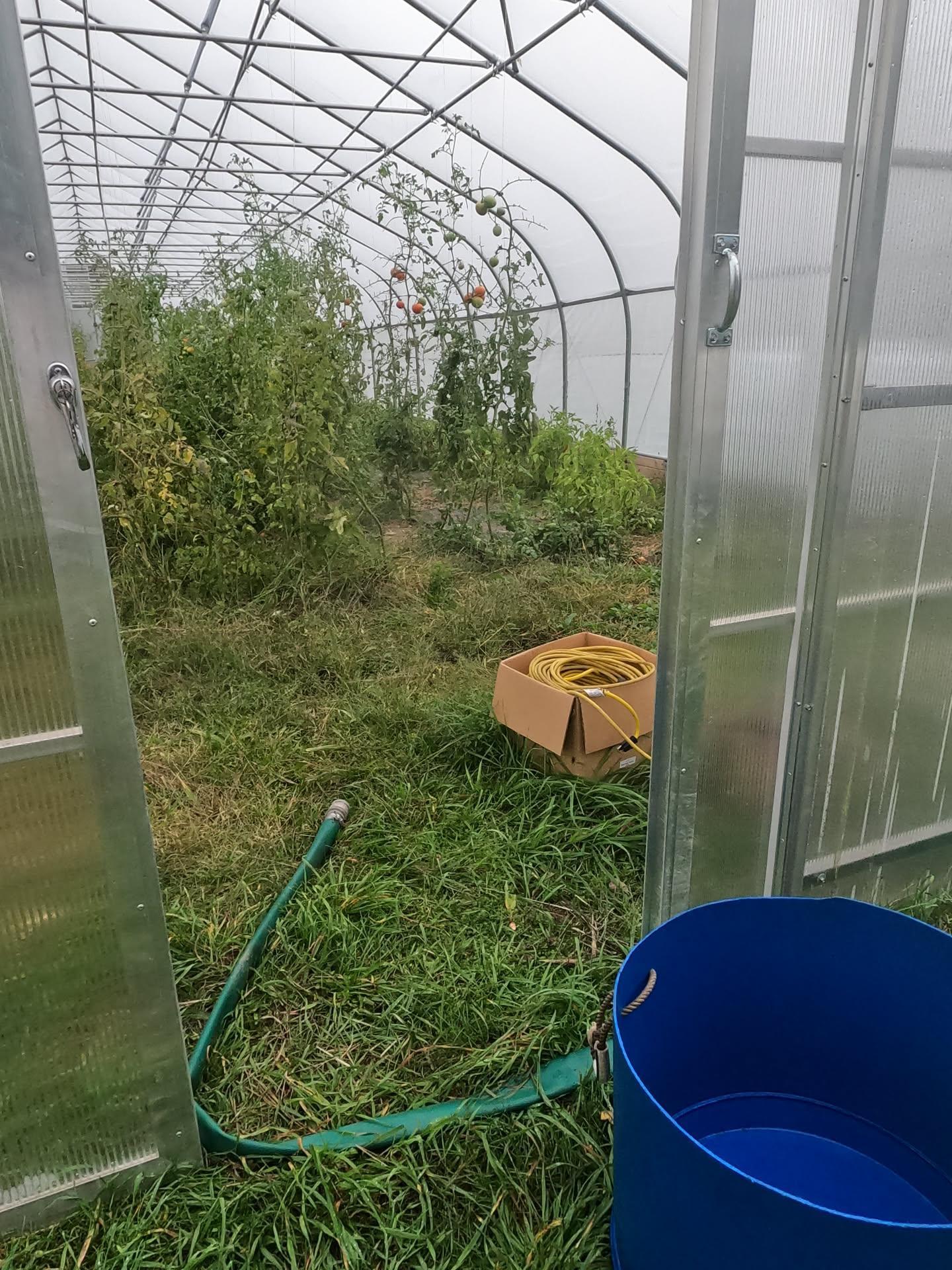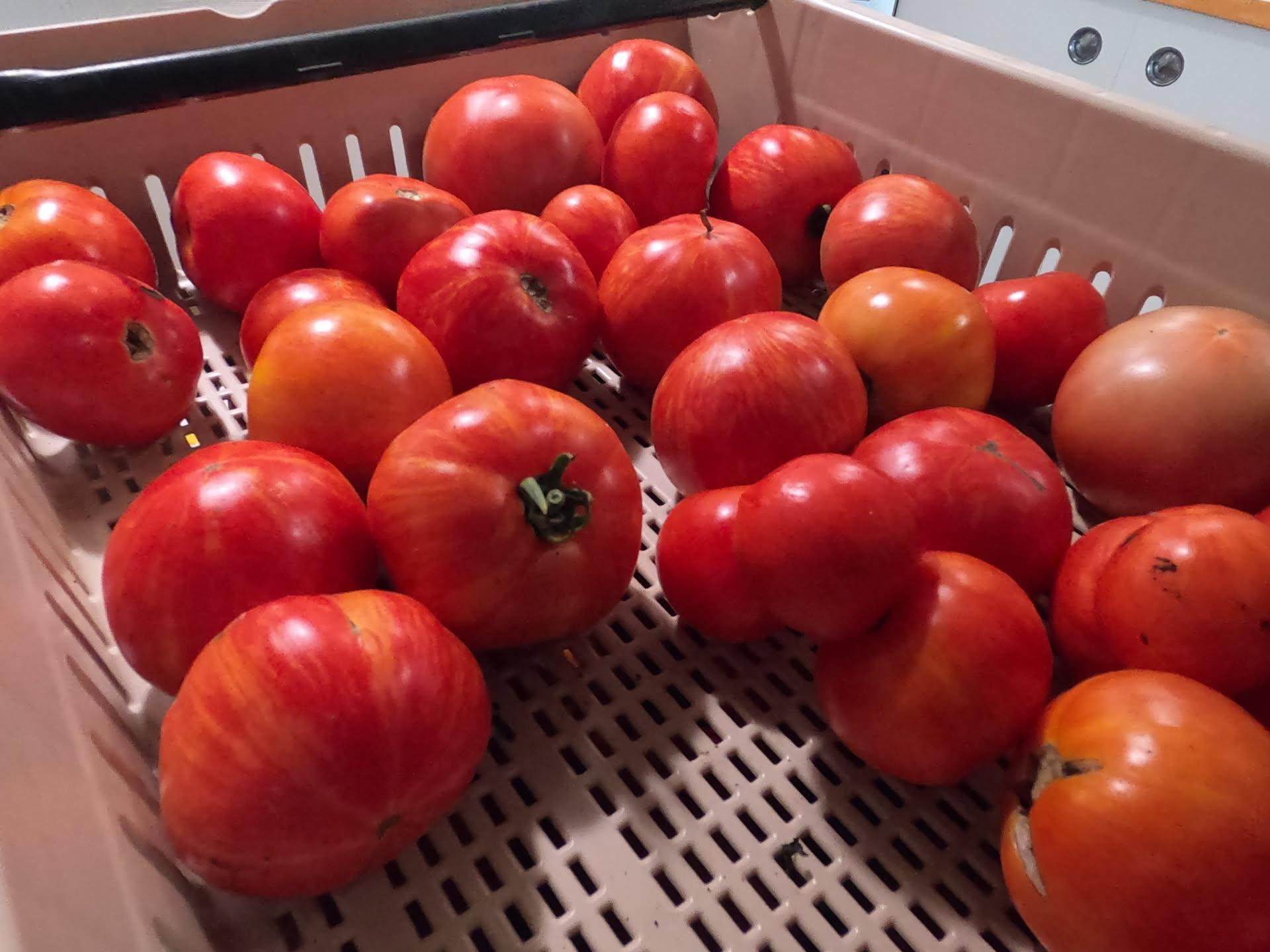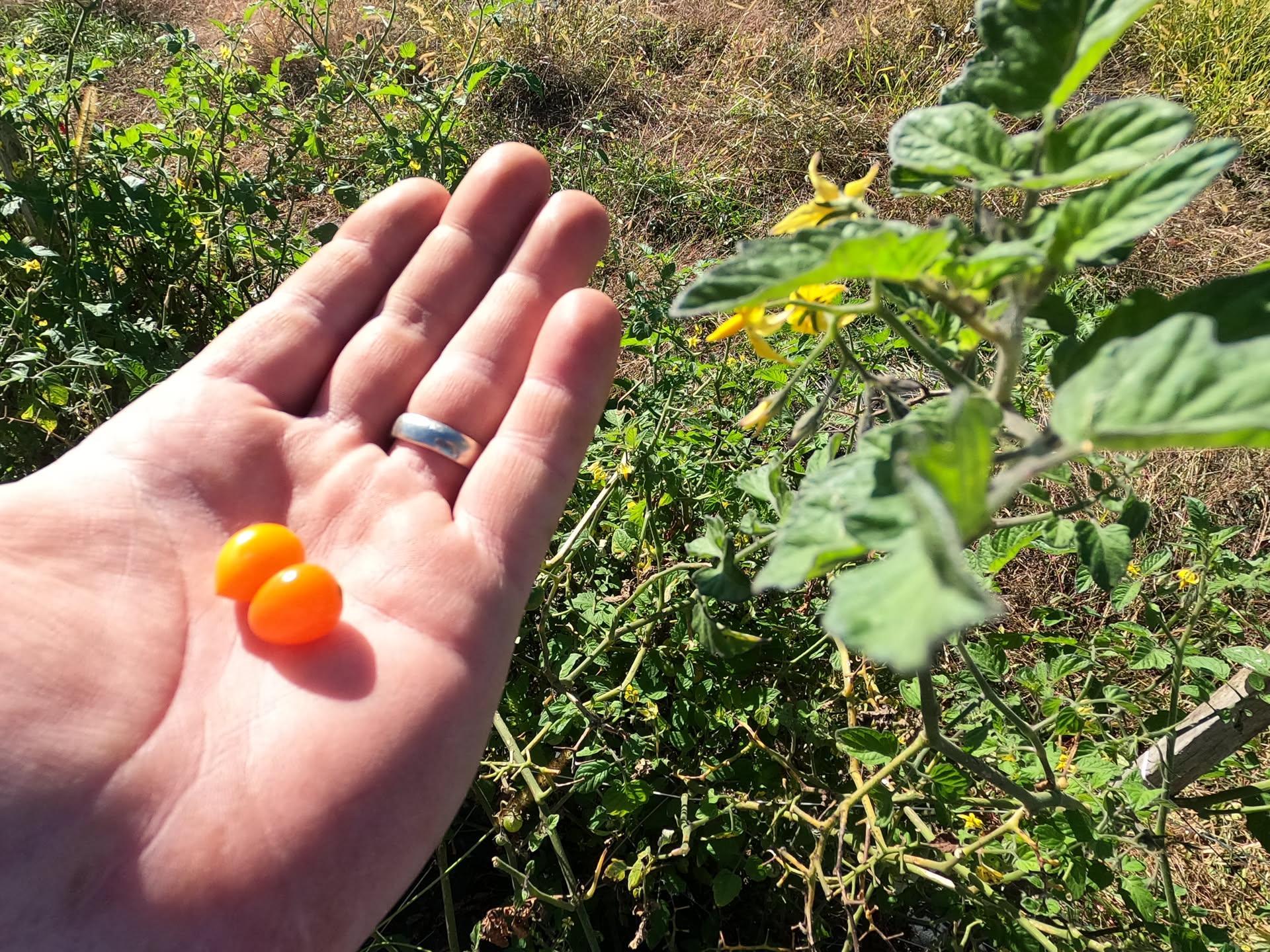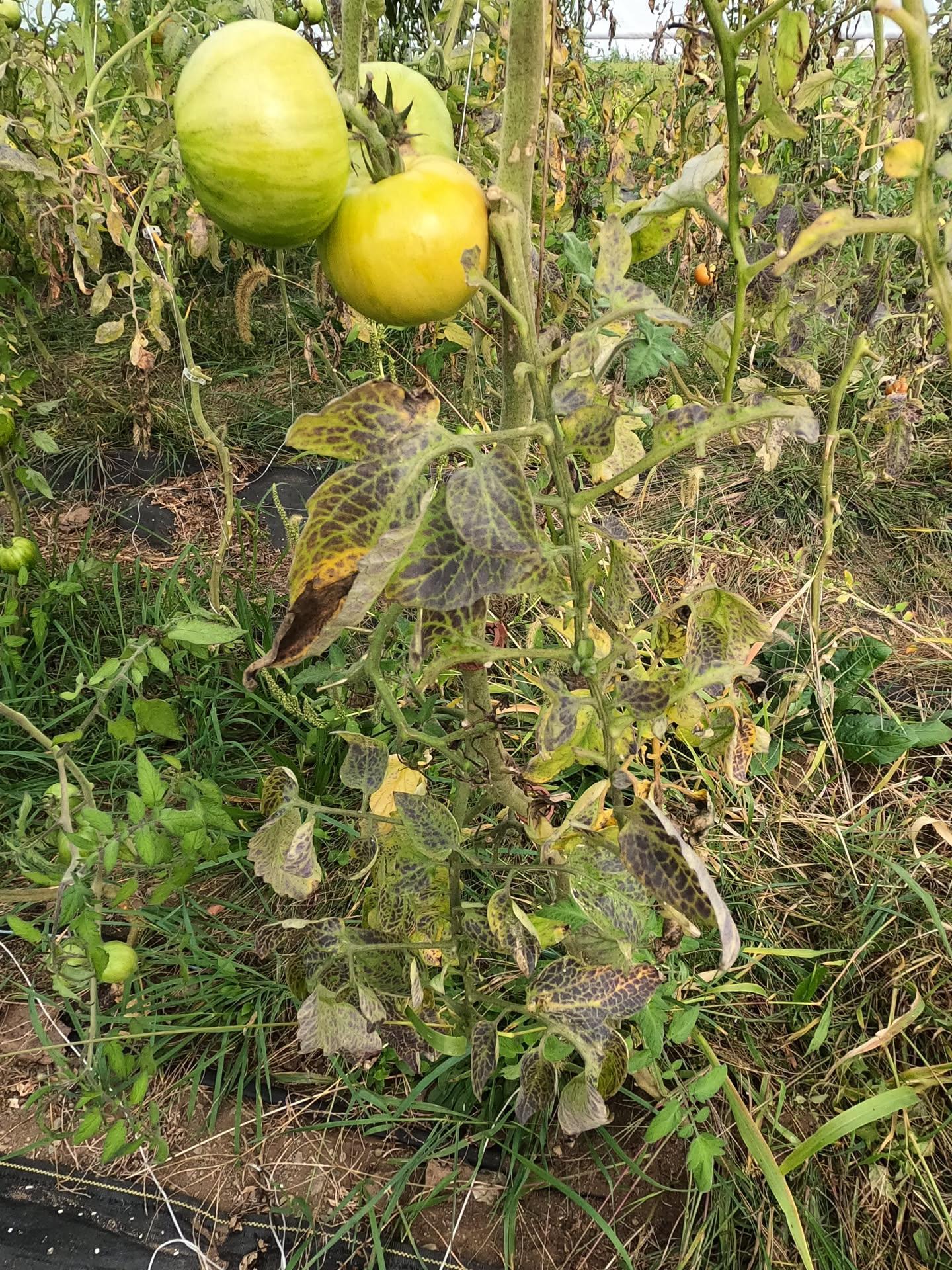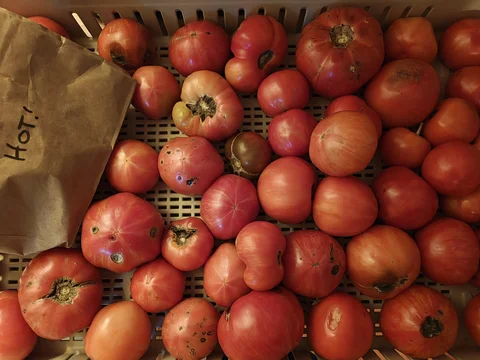TL;DR
We harvested scallions, bok choy, and eggplant then prepared a high tunnel for lettuces. On the ride home, I learned about stoichiometry, the chemical math behind soil amending.
In my tech work, I’ve really started using my new instance of Karakeep (Pocketapp replacement) for articles I come across and want to archive, and looking forward to incorporating them this weekend into my blog posts moving forward.
Stoichiometry in Five Minutes
Unless you’re a master’s student in agronomy or soil microbiology, does bothering to dive in to chemistry and atomic maths really make sense? Not likely when you’re busy mucking out chicken coops,taking calls from customers and owners, driving to market to serve CSA members, managing a farm team, and everything else that the primary deals with on a day-to-day basis. But when you’re an ex-corpo-tech farm intern with an insatiable curiosity, of course it does.
“Stoichiometry is a branch of chemistry that deals with the quantitative relationships between reactants and products in chemical reactions. It uses balanced chemical equations to calculate the amounts of substances involved in a reaction, including the mass, moles, or volume of reactants and products. Essentially, it’s a way to “measure elements” (from the Greek roots “stoicheion” and “metron”) in chemical reactions. - Google
Although farming feels biological and ecological, it is rooted in chemistry. Stoichiometry helps organic farmers understand and manage nutrient cycles, soil amendments, and crop growth. - ChatGPT
I personally like this low-budget student explanation because it gets to the point without getting bogged down in unnecessary details:
How Does Stoichiometry Apply to Our Tomatoes?
The property staff, including the farm and grounds keeping crews, have spent a lot of time and energy on setting up a new greenhouse dedicated to tomatoes this year. We have many outdoor cherry and heirloom varieties, but these greenhouse ones are of particular interest to everyone involved. And they are producing…almost 200 stems trained up twine to the roof, each easily produce 20-30 sellable tomatoes about $2 each. Though this doesn’t pay for itself this year, it will next year once dialed in even more than it is now.
What caught my ear about stoichiometry was that there is applicable math to the very different conditions of this greenhouse. Soil preparation, watering schedule, amendments, foliar feeds, heat and light…every stem matters in dollars. These things can be measured and optimized, but doing so manually is often infeasible. There are many things happening on the farm at any moment and an apparatus like this with so many eyes on it matters. Do greenhouse operations deserve a dedicated specialist? For many crops and seasoned growers, maybe not; but if you’re trying to maximize yield and viability, maybe this kind of precision agriculture does need a closer pair of eyes and hands.
Look, 14% increase in yield is a significant improvement (even if it’s talking about an orchard, not tomatoes) and there are many other factors contributing to this kind of success. But by adding some basic stoichiometry maths to optimize our greenhouse performance, I think we could see some improvements and apply those lessons to other soil spaces around the farm as well.
I’m guessing that there’s at least one agro-adjacent if not simply stoichiometry-familiar graduate student on the North Shore of Massachusetts that could help us with this, but finding them is the tricky part. For the moment, we’ll have to rely on our own knowledge and experience to make the most of this greenhouse…which to be clear is working very well for the time being. The minimal loss to splitting and blossom-end rot is less than I’ve seen in other greenhouses.
Slow vs. Fast Crops
Tomatoes are a slow crop, taking months to prepare and grow. They require a lot of care and attention, but the payoff is worth it in the end. There are many other similarly slow crops that require less attention, but are less of a payoff (not nutritionally, but monetarily) such as potatoes and carrots.
On the opposite end of this spectrum are fast-growing crops like lettuces, scallions, and radishes. These crops can be grown quickly but are often harvested in one swoop and need to be replanted throughout the season (such as our harvesting and planting of scallions both done today).
Then there are the longer-term crops that produce throughout the season, unlike tomatoes or lettuces, such as squash, peppers, eggplant, swiss chard, and kale. They only require planting once, need a bit of care throughout the season, but can be harvested from many times.
A mix of all these types and speeds of crops makes for a great CSA. It takes expertise to know how to get a crop portfolio running smoothly. Additional improvements, optimizations, and scaling can feel like an upset to the system, but change is always a constant and communication is important on a small farm.
Capture and Optimize Continuously
So much goes on every farm day and from many peoples’ perspectives that it’s hard to get a complete picture of what’s happening. I was talking with another staff member about this today…they wish they could capture their observations, ideas, and reminders easily from their phone. Technically they can already with features like Siri on iPhone, but then getting that information back in a consolidated and useful way, not to mention being able to prune and add to it later, is a challenge.
I’ve been doing this for 5 months, every day I’m on the farm, for the purposes of this blog. If it comes time to build an app, I’ll have not only a ton of data to work with, but also a ton of experience to draw from. The fact is that we have really great documentation of the greenhouse’s setup and operation, which can be used to optimize its performance further. From my own notes:
- In early March, all of the the tomatoes were seeded and started in the nursery greenhouse
- In late March, we potted the Hot Spikes up to 4 inch paper pots using more of the Vermont mix
- In early April, we watered and watered and watered them twice every day
- On April 16th, we tested out the trencher to create six trenches to plant into
- On April 17th, we filled the trenches with compost and laid irrigation drip tape
- On April 22nd, I had an observation that the potted tomatoes were leggy, but very healthy too
- On April 24th, we filled the trenches with compost and laid irrigation drip tape
- On May 15th, I have a speculative note about how a week later, we’d be planting them
- On May 27th, we planted the tomatoes in the greenhouse
- Finally, by the first week of August, we were harvesting tomatoes
AI Summary from Field Notes
Final Consolidated Summary
Main Themes
- Agricultural Work: Crop planting (lettuce, scallions) with row covers, crop management, and sustainable practices.
- Animal Care: Coop maintenance, livestock watering, and preparation for new animals (chicks).
- Market Preparation: Van packing, leftover produce handling, and quality assurance.
- Sustainable Practices: Row covers for crop protection, waste management (e.g., leftover bok choy), and resource repurposing.
Activities Performed
- Planted lettuce and scallions with row covers for protection.
- Cleaned a chicken coop for chicks, raked debris.
- Packaged the van, watered pigs and chickens.
- Distributed leftover bok choy and eggplant to pigs; left outer bok choy leaves for transport.
- Noted differences between egg-laying hens and meat birds.
New Things Encountered
- Row Covers: Used to protect lettuce/scallion rows.
- Chicken Coop Transition: Preparing a coop for chicks (meat birds) vs. egg-laying hens.
- Bok Choy Handling: Leaving outer bok choy leaves on plants for transport, stripping them during washing.
- Leftover Produce Distribution: Using bok choy and eggplant as pig feed.
Questions for Future Research
- How effective are row covers for protecting lettuce/scallions?
- Will the cleaned coop be suitable for chicks, or additional modifications needed?
- Is leaving outer bok choy leaves a sustainable method, or should they be composted?
- How viable is using leftover produce as pig feed?
- Will chicks adapt to the new environment?
Suggested Actions
- Document Row Cover Method: Standardize use of row covers for crop protection.
- Monitor Coop Suitability: Assess if the coop meets the needs of chicks.
- Develop Leftover System: Categorize and distribute leftover crops for animal feed or compost.
- Train on Bok Choy Handling: Standardize leaving outer leaves on bok choy.
- Track Pig Feed Use: Monitor pig feed to evaluate leftover produce viability.
Part 1
Main Themes:
- Farm Operations and Crop Management: Harvesting and preparing various crops (scallions, bok choy, eggplants, cucumbers).
- High Tunnel Maintenance: Unfurling and repositioning plastic on the high tunnel for structural integrity.
- Collaborative Work: Assisting in harvesting, washing, and teamwork with peers (e.g., Jamie).
- Weather-Adaptive Farming: Utilizing cool weather for labor-intensive tasks and planning for seasonal crop cycles.
Activities Performed by the Intern:
- Helped with general chores.
- Bunched scallions from a patch planted a month prior.
- Harvested bok choy from a patch planted three weeks prior.
- Washed harvested produce (scallions, bok choy, eggplants, cucumbers).
- Unfurled and repositioned 9mm plastic on the high tunnel’s sides.
- Assisted in harvesting eggplants and cucumbers.
- Collaborated with Jamie to maintain the high tunnel’s structure (metal hoops, wires, and plastic).
New Things Encountered/Not Yet Encountered:
- High Tunnel Structure: Details of the high tunnel’s metal hoops, wires, and plastic lining, including the process of unfurling and repositioning the plastic.
- Crop Interaction: Understanding how the high tunnel’s environment affects crop growth (e.g., bok choy and scallions).
- High Tunnel Maintenance: Specific steps for maintaining the high tunnel’s structural integrity and plastic coverage.
Questions for Future Research:
- How does the high tunnel’s plastic and structure impact crop yield and growth?
- What is the optimal timing for unfurling the high tunnel’s plastic?
- How does the high tunnel’s maintenance affect long-term crop health and weather resilience?
- Are there gaps in the current high tunnel setup (e.g., plastic coverage, hoop spacing) that need improvement?
Suggested Actions:
- Document High Tunnel Maintenance: Create a checklist or log for unfurling and repositioning the high tunnel’s plastic.
- Monitor Crop Health: Track the growth of crops in the high tunnel versus open fields to assess environmental benefits.
- Train Team on High Tunnel Maintenance: Ensure consistency in maintaining the high tunnel’s structure for future seasons.
- Research Optimal High Tunnel Practices: Investigate best practices for plastic coverage, hoop alignment, and seasonal adjustments.
Part 2
Main Themes
- Agricultural Work: Planting crops (lettuce, scallions), row cover installation, and crop management.
- Animal Care: Cleaning a chicken coop, watering pigs and chickens, and preparing for new livestock (chicks).
- Market Preparation: Packing the van for market, handling leftover produce, and ensuring quality for sales.
- Sustainable Practices: Using row covers for crop protection, managing waste (e.g., leftover bok choy and eggplant), and repurposing materials (e.g., cleaning the coop).
Activities Performed by the Intern
- Planting:
- Planted lettuce and scallions in the top field.
- Used wire hoops and row cover for the lettuce/scallion rows.
- Coop Maintenance:
- Cleaned a small chicken coop for future chicks (meat birds).
- Raked out dried hay and debris from the coop.
- Market Prep:
- Packaged the electric van for market.
- Watered pigs and chickens.
- Waste Management:
- Distributed leftover bok choy and eggplant to pigs.
- Left bok choy outer leaves on for transportation, stripping them during washing.
- Documentation:
- Noted the difference between egg-laying hens and meat birds.
New Things Encountered
- Row Covers: Used wire hoops and row cover for lettuce/scallion rows.
- Chicken Coop Transition: Preparing a coop for chicks (meat birds) versus egg-laying hens.
- Bok Choy Handling: Leaving outer leaves on bok choy for transportation, stripping them during washing.
- Leftover Produce Distribution: Using bok choy and eggplant as feed for pigs.
Questions and Future Research
- Row Covers: How effective are the row covers for protecting lettuce/scallions from pests or weather?
- Coop Preparation: Will the cleaned coop be suitable for chicks, or will additional modifications be needed?
- Bok Choy Handling: Is leaving outer leaves on bok choy a sustainable method, or could it be improved?
- Leftover Produce: How often will leftover produce (e.g., bok choy, eggplant) be used as feed for pigs?
- Chick Growth: Will the meat birds (chicks) grow into market-ready animals, or will they require additional care?
Suggested Actions
- Document Row Cover Method: Record the process of installing row covers for future reference.
- Monitor Coop for Chicks: Observe the coop’s condition and ensure it meets the needs of the chicks.
- Develop a Leftover Produce System: Create a system for categorizing and distributing leftover crops (e.g., bok choy, eggplant) for animal feed or compost.
- Train Team on Bok Choy Handling: Share the technique of leaving outer leaves on bok choy with the team to ensure consistency.
- Track Pig Feed Usage: Keep a record of how often pigs are fed leftover produce to assess its viability.
[end of post]
Enjoy Reading This Article?
Here are some more articles you might like to read next:

